CLINICAL RESEARCH IS CREATING THE CANCER TREATMENT OF THE FUTURE
Award winning scientist
Robert S. Langer: IN EVERY ASPECT OF LIFE SCIENCE, CURIOUSNESS IS THE FOUNDATION OF FUNDAMENTAL RESEARCH

EU Commisioner
Vestager: TECH SHAPES OUR FUTURE
November 2022 Price DKK 129,- / SEK 177,- / NOK 165,BUSINESS / LIFESTYLE
Dr.
Margrethe
SPECIAL EDITION: LIFE SCIENCE & BIOTECH nordic business


²

nordic business // 4
Furniture handmade in Norway since 1951 by Slettvoll. Visit our stores in Scandinavia.



NORWAY: BERGEN, DRAMMEN, HAUGESUND, BÆRUM/KOLSÅS, KRISTIANSAND, LILLESTRØM, MOSS, OSLO/SKØYEN, SKI, STAVANGER, TRONDHEIM, TØNSBERG, ÅLESUND SWEDEN: STOCKHOLM, GÖTEBORG, MALMÖ DENMARK: COPENHAGEN

nordic business // 5 Foto: Margaret M. de Lange
WWW.SLETTVOLL.COM
NORDIC LIFE SCIENCE MUST NOT REST ON ITS LAURELS
By Anette Steenberg, CEO of Medicon Valley Alliance

As illustrated by the all-time high international participation at this year´s Nordic Life Science Days conference in the Swedish city of Malmö this autumn, the Nordics has become a life science hotspot attracting investors, talent, and companies from all over the world. Nowhere, is this positive development more visible than in the Medicon Valley - the cross-border region covering eastern Denmark and southern Sweden. Medicon Valley has undergone a tremendous development over the last 25 years and has firmly established itself as not only the leading life science cluster of the Nordics but also the largest life science region in the European Union.
There are many reasons for this positive development. Key foundations such as The Novo Nordisk Foundation, Mats Paulsson´s Foundations and Knut and Alice Wallenberg Foundation have invested heavily in Danish and Swedish life science. We have experienced an increasing political awareness and interest in the life science sector due to the positive contributions to patients and to society via good jobs and remarkable exports and tax revenues, all resulting in ambitious national life science strategies. Moreover, there has been public investment in research facilities such as MAX IV and European Spallation Source in Region Skåne, which will also benefit the life science industry. Furthermore, there has been a boom in new innovative life science start-ups in both Lund, Malmö and Copenhagen spinning out from the successful incubators and accelerators such as the Danish BioInnovation Institute and Swedish SmiLe incubator in Lund. We have also seen massive private investments in life science manufacturing, DKK 45 bn over the past couple of years.
At Medicon Valley, we have actively worked to strengthen the
Danish-Swedish collaboration within strategic existing and future R&D stronghold projects within infertility, diabetes, and microbiome related R&D, strengthened our professional network and we have seen a growing awareness and interest in the life science cluster in Medicon Valley from international investors and talent.
Today a total of around 65,500 people works in the more than 1,200 private life science companies in our bi-national region and in the last five years alone 12,000 news jobs have been created and about 300 new companies have been established. Finally, The Nordics are not just amongst the happiest nations in the world, we are also ranked in the very top as most Innovative countries in Europe (1. Sweden, 2. Finland, 3. Denmark (European Innovation Scoreboard)
From my chair as CEO of the Danish-Swedish life science cluster organization, Medicon Valley Alliance, there is reason for considerable optimism when we officially celebrate our 25th anniversary this. But we must not rest on our laurels!
When we dig a little deeper it becomes clear, however, that other European life science regions in for instance UK and Switzerland are ahead of us in key areas and that other European centres of academic excellence are continuously challenging our position.
Furthermore, the “life science race” is not just a European race. The competition for talent, academic and regulatory excellence, innovation, manufacturing technology etc. is global and we need to secure attractive frame work conditions for research and development and actively position ourselves among the growing number of existing and emerging global life science hot spots in US and Asia.
The
At Nordic Business, we want to take a sustainable approach to producing a print magazine. Our first step is printing on PEFCcertified paper, and the topic is also an increasing focus editorially.
Next issue published: 1st March 2023
Nordic Business
Partnermedier St. Kongensgade 59 A, 4. sal 1264 Kbh.
by
All rigths reserved. Material contained in this
can not be reproduced, in whole or in part, without prior permission of Nordic Business.
nordic business // 6
Executive Editor & Publisher Henning Andersen Editor & CCO Julie Brix Journalists/Contributors Marie-Louise Arnfast / Malin Sjögren / Flemming Østergaard / Bibi Christensen / Henrik Malmgreen / Anette Steenberg International Project manager: Irian Rajic Translators Bibi Christensen Art Director: Heidi Carlsen Graphic production Victor Vestergaard Sales Partnermedier ApS Cover Photo
Queen Elisabeth Prize for Engineering Foundation Print Printconnect ApS Contact nordic@partnermedier.dk
is published
K
PEFC Ce r t e d This produc t s from sustainab y managed forests and co ntrolled sources ww w.pefc.org 19-31-02
publication
UPGRADE YOUR BUSINESS DEVELOPMENT AND INNOVATION SKILLS WITH A SPECIALIZATION IN LIFE SCIENCE
Are you working within the Pharma, BioTech or MedTech industry? At Copenhagen Business School’s Master of Business Development we offer a customizable executive programme with focus on the challenges in the Life Science industry.

Learn from lecturers and guest speakers with extensive knowledge and experience within your field and build a strong network with fellow leaders from the industry.
Learn more about our Life Science specialization at MBD.CBS.DK/EN
CONTENT
What should life sciences businesses look for in an IP firm?

Fundamental research is the foundation of innovation
5 Up/Down:
Winners and losers in Nordic business in 2022
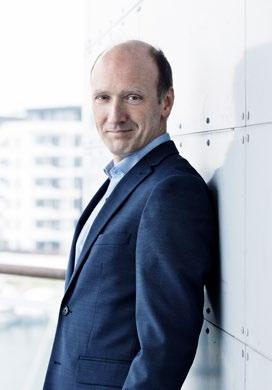
Tech shapes our future andwe can’t be passive about thesector’s gender imbalance
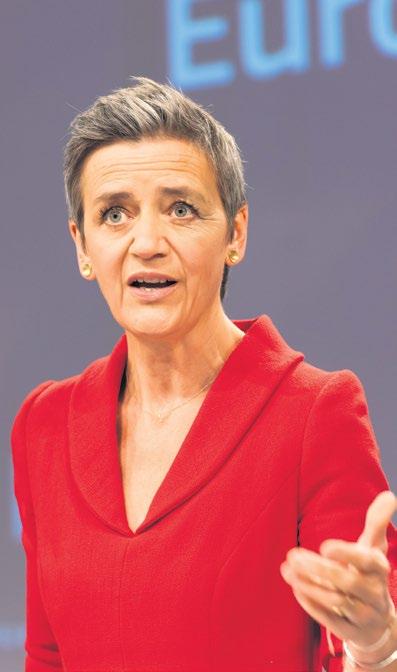
nordic business // 8
32
24 20
34
DR. ROBERT S. LANGER:

Be curious, be innovative, fight and reach for the stars

Nordic Women
Regenerative Leadership:What can leaders learn from nature?

nordic business // 9 10 Inspirational
in Life Science & Tech 38 70 Nordic Excellence - An invitation to unique events and celebrations
48
10
Even if he has turned 74, Dr. Robert S. Langer still has his mind set on being curious and innovative. Along with Novo Nordisk in Denmark he is working on developing new devices that safely and effectively deliver biologic medicines through oral administration. One example is the SOMA robotic pill, that now is licensed exclusively to Novo Nordisk for further development.
 Photo:TheQueen ElisabethPrize forEngineering Foundation
Photo:TheQueen ElisabethPrize forEngineering Foundation
BE CURIOUS, BE INNOVATIVE, FIGHT AND REACH FOR THE STARS
Life Science has really taken off as an industry, and in the Nordic region there is a massive potential for developing new biotech products. Especially if some piece of advice from one of the world’s greatest researchers and scientists are taken into consideration.
By Henrik Malmgreen
“In every aspect of Life Science, one main topic is extremely important. That is to be curious. Curiousness is the foundation of fundamental research, and it is curiousness, that brings new products to life. Products that can help humans”. So says one of the world’s leading researchers and scientists, Dr. Robert S. Langer, from Langer Lab, MIT Department of Chemical Engineering, who himself holds more than 1.400 granted or pending patents.
Robert Langer's productivity and influence across several scientific fields is vast, and from his base at Massachusetts Institute of Technology in Boston, USA, the 74 year old scientist is still keeping research at an incredibly high level. Langer's research laboratory at MIT is the largest biomedical engineering lab in the world maintaining more than 10 mio. dollars in annual grants and more than 100 researchers.
A true pioneer in biotech Robert Langer has been awarded numerous leading prizes in recognition of his work and has received over 220 major awards. Therefore he is considered a pioneer in many new technologies, including controlled release systems and transdermal delivery systems, which allow the administration of drugs or extraction of analytes from the body through the skin without needles or other invasive methods.
”I think it is fantastic, that fundamental research can be translated to services and products, that can have an effect on peoples life, and to me helping people is all in a day’s work. It is incredible fascinating to follow a path, that is never really straight, and still manage to make discoveries which result in applications, we never thought of”, says Robert Langer with great enthusiasm.
Fought through tough times
More than anyone he knows how tough a battle this can be, and in his early years as a researcher and scientist, he several times had to put up with being ridiculed because of ideas, the medical establishment thought was crazy or absurd. However Robert Langer followed his dreams and ideas and pulled through. Today he is very focused on the sweet spot, where technology, MedTech and the human body meet.

nordic business // 11
“Right now I am working with new kinds of delivery systems for distributing medicine in the human body. In this perspective
I can mention pills, that last for a week slowly administering the medicine, and vaccines that boosts themselves over time meaning, when you got one shot, you will never need to get another. Also in collaboration with Novo Nordisk in Denmark I work with developing a pill, that automatically injects insulin in the body”, says Robert Langer.
Keep on going new ways
Since 2015, scientists from Novo Nordisk and Robert Langer have explored novel technologies as alternatives to syringes and pen injectors, by co-creating new devices that safely and effectively deliver biologic medicines through oral administration. This has resulted in several high-impact scientific publications describing breakthrough inventions, including the SOMA robotic pill. This is now licensed exclusively to Novo Nordisk.
In 2019 Robert Langer accepted a job as chairman of a group of scientific experts who will advise Novo Nordisk Fonden's biotech incubator Bioinnovation Institute meaning that heso to speak - to this day still takes his own medicine namely, to be curious and innovative. Especially when it comes to the Nordic region, he sees a great potential for fundamental research stressing the importancy to be curious and go new ways.
Dr. Robert S. Langer the mostcited researcher and scientist in biotechnology
Robert Samuel Langer born August 29, 1948 is an American chemical engineer, scientist, entrepreneur, inventor and one of the twelve Institute Professors at the Massachusetts Institute of Technology. He was formerly the Germeshausen Professor of Chemical and Biomedical Engineering and maintains activity in the Department of Chemical Engineering and the Department of Biological Engineering at MIT. He is also a faculty member of the Harvard–MIT Program in Health Sciences and Technology and the Koch Institute for Integrative Cancer Research. He is a widely recognized and cited researcher in biotechnology, especially in the fields of drug delivery systems and tissue engineering. He is the most cited engineer in history and 3rd. most cited individual in any field, having authored over 1,500 scientific papers, and is also a prolific entrepreneur, having participated in the founding of over 40 biotechnology companies including Moderna.

nordic business // 12
Photographer: SteveBoxen
Growth financing for Nordic SMEs
Small and medium-sized companies are at the forefront of the green transition. We offer high-risk debt financing to help SMEs scale up their green solutions on global markets.

We’re ready to risk for green
nefco.int/SME
PORTON PHARMA SOLUTIONS ENTERS THE NORDIC REGION
Even if Porton Pharma Solutions is one of the major CDMO players worldwide, it still takes a lot of work to enter a completely new market. However, with a robust plan for investment and growth, the company is confident that an established presence in the Nordic region is on the horizon.
By Henrik Malmgreen
From its inception in 2005 as a small molecule-focused contract manufacturing organization (CMO) based out of Chongqing in China, Porton Pharma Solutions has grown into a global endto-end contract manufacturing and development organization (CDMO) that aims to serve customers all around the world. Over the coming years, the company aims to establish a presence in the Nordic market.
In order to get a stronghold, Porton is currently in the process of establishing a manufacturing facility in Slovenia, which will also serve the European market in general. This plant is planned to be fully operational by early 2024. Additionally, the company plans on working with key organizations in the region to better understand customer needs and provide tailored services.
A lot of work is waiting
“Though Porton Pharma Solutions is a well-known and established brand in the Asia Pacific region and developing in North America, there is still a lot of work to be done in the Nordic region. A global perspective is critical to success in the CDMO space, and Porton recognizes this. We are taking initiatives to ensure that we are able to provide robust and customer-focused services globally and have experienced quite a rapid growth within North America”, says Arsalan Khan, Associate Director of Marketing. He continues: “The aim will be the same for the Nordic region, and through strategic partnerships and investment in facilities like the site in Slovenia, we are excited to see a similar kind of growth when we enter the Nordic region. Establishing yourself in a new market is never easy, but we embrace the challenge and look forward to working with new contacts and customers in the region”.
“The Nordic market shows a prospective growth potential, so we have to be very active and ensure that we work with customers to ensure that their needs are addressed” saysAlexandraPichardNielsen VicePresidentofBusinessDevelopment.

nordic business // 14
Sponsored content
Learn to know the customers
With more than 5.000 customer centric employees, operations and commercial offices across the US, EU and China, Porton Pharma Solutions provides global pharmaceutical companies with innovative, reliable, and end-to-end process R&D and manufacturing services across small molecule APIs, dosage forms and biologics. The company’s vision is to be the most open, innovative, and reliable pharmaceutical service platform in the world, and the mission is to enable the public’s early access to good medicines.
“We strive to be as customer centric as possible, and in the nearest future, we will use a lot of resources to establish and maintain a solid network in the Nordic Life Science industry in order to make ourselves well known among key customers in the region.
The Nordic market shows a prospective growth potential, so we have to be very active and ensure that we work with customers to ensure that their needs are addressed.
Porton has become a name that resonates with both strong technical expertise as well as high quality customer service, and we intend on bringing this to the region as well”, says Porton’s Vice President of Business Development, Alexandra Pichard Nielsen.
The Nordic stronghold
For now, it is the office in Copenhagen, Denmark, that is the base of Porton’s operations within the Nordic market, but there is a plan to grow over time and to also be represented in the other Nordic countries. Right now, Porton Pharma Solutions is working on analyzing the new market, which takes place out of the headquarters in China. From there, the aim will be finding outlets for showcasing Porton capabilities and collaborating with customers, as well as nurturing those relationships into projects and revenue.
“The site in Slovenia is a major step in the right direction since it will bring manufacturing capability locally to customers in the area. We are starting to see the growth of some really great relationships with clients already through some of our efforts, and the future looks very bright,” ends Arsalan Khan.

Porton Pharma Solutions
“We are taking initiatives to ensure that we are able to provide robust and customer-focused services globally and have experienced quite a rapid growth within North America. The aim will be the same for the Nordic region” saysArsalanKhan,AssociateDirectorofMarketing.
Porton Pharma Solutions Ltd (Porton) is a contract development and manufacturing organization (CDMO) that provides small molecule APIs (active pharmaceutical ingredients), dosage forms, and biologics manufacturing services. The company offers API process development, manufacturing, technology platform, quality studies and analytical research and development, and CMC registration support services. It also provides drug product CDMO services, biologics CDMO services, client-oriented program management services, among others. Porton operates research and development centers in China, manufacturing facilities in China and process technology centers in the US. The company also has sales offices across Switzerland, Belgium, Denmark, and the US. Porton is headquartered in Chongqing, China.
nordic business // 15
Sponsored content
NORDIC LIFE SCIENCE DAYS HAS MADE ITS MARK ON THE INTERNATIONAL LIFE SCIENCE MAP
In 2023 Nordic Life Science Days for the first time will take place in the Danish capital Copenhagen. Expectations are high, as the 2022 venue in Malmö became record-breaking.
By Henrik Malmgreen

Over the last decade, Nordic Life Science Days has grown from a regional Nordic event to one of the biggest of its kind in the international life science industry landscape. In the last days of September, the 9th edition took place in Malmö, and next year the Nordic Life Science Days will celebrate its 10th anniversary in Copenhagen. It is the first time, the conference takes part outside Sweden.
“Looking back on this year’s conference with 1.540 delegates and 880 companies, I have very high expectations to next year. In the aftermath of Corona with lots of meetings in the virtual workspace, the industry longed for a physical event. It is absolutely crucial to meet in person in order to power-up collaborations, build-up relationships and do sustainable business”, says Managing Director of Nordic Life Science Days, Olivier Duchamp-Giudicelli.
“I think it is important, that the participants get a good experience, because when it comes to the professional level, I am convinced, that Nordic Life Science Days already is in the top of mind in the business. Compared with other partnering events in Europe, I would say, that we take a position as #3 or #4, and seen from an international perspective, we sure hit Top Ten”, says Olivier Duchamp-Giudicelli.
“In an international perspective, the Øresund Region is leading in almost area in life science. We are well ahead when it comes to Pharma, Biotechnology, MedTech and Diagnostics”
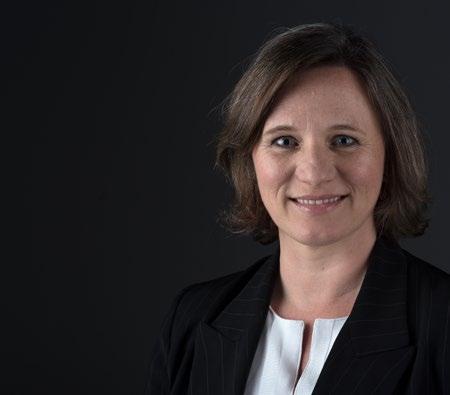
ManagingDirectorof NordicLifeScienceDays, OlivierDuchamp-Giudicelli.
NLSDays 2023 - First time in Denmark Nordic Life Science Days 2023 is scheduled on 29-30th. November in Copenhagen, Denmark. The venue will take place in Bella Center’s Arena, and it is already well on its way, when it comes to the planning. A new team has taken over, and it will be exciting to see, what new initiatives will be presented. A consortium with several Danish players is already established. It is the first time, the venue takes place outside Sweden, meaning the tenth edition of the venue will be quite special, and according to Bettina Reventlow-Mourier, Deputy Convention Director and Head of congress in Wonderful Copenhagen, the expectations are really high. Copenhagen ranks as the 15th. most popular congress city in the world.
We offer something special ”With 135 showcasing companies, organizations and countries, the exhibition became the largest ever developed, and with 100+ sponsors and partners, we talk the most supported event in 9 years”, continues Olivier Duchamp-Giudicelli, adding that even if the venue has grown quite big, the organizers work hard to create a comfortable and cozy atmosphere. The Nordic Touch, as Olivier Duchamp-Giudicelli calls it.
“40 pct. of all congresses held in Copenhagen concerns Life Science, and through Copenhagen Legacy Lab we work very systematically to match the attendees with local businesses, research environments and private as well as public networks”
BettinaReventlow-Mourierfrom WonderfulCopenhagen.
nordic business // 16
Sponsored content
THE LIFE SCIENCE CONSULTING GROUP
We develop organizations through people
For many companies in life science, it can be a problem to get all tasks solved with a limited number of head counts in the com pany – i.e., a limited number of permanent positions. This is the reason we see a great interest in a so-called interim solution with a consultant who can perform specific tasks for a short or long time, but without the company permanently employing and being responsible for administration in relation to the employee.
"It is a smooth and flexible solution to bring in an interim consultant, and as soon as there is no longer need for the extra hands, resource and competence, you say thank you for now," KimRaabymagle,CountryManagerinDenmarkatPharma Relations,marketleaderinrecruitment,regulatoryservices andinterimmanagementinNordicLifeScience.
“In addition, many companies are very project- and task-driven and need varying employment types”, he points out. And for this the flexible model with interim consultants fits perfect.

Pharmarelations' customers vary from small start-ups within Life Science to the major international Life Science companies. "If a company is looking for recruitment through PharmaRelations, it is because the company has a head count – a permanent po sition – they need occupied, and then we act as a recruitment agency. But do they have a position that is not a permanent po sition – but need a full-time employee, for example the next year or two – then we offer an interim consultant.

We typically present 2-3 candidates, the customer chooses who they want, after which the person is employed by us, but works 100 percent for the customer for a shorter or longer period," says Kim Raabymagle, pointing out that many companies are very controlled by the number of the permanent positions – so that official salary costs must not exceed a certain amount.
All customer facing have been managers in Life Science All customer facing employees in PharmaRelations have been managers or in Life Science at some point in their career, before joining PharmaRelations and now service the industry where they come from.
"You could say that we have been sitting in the customer's chair. We know what they are talking about when it comes to terminol ogies and technical language. This way, we can offer a tailored and satisfactory service – where we do not have to ask all sorts of ques tions to understand what it's all about," says Kim Raabymagle.
nordic business // 17
Sponsored content
MUNINN CYBER SECURITY TO PROTECT ENTIRE DANISH PUBLIC HEALTHCARE SECTOR
Muninn & NNIT have won a tender to provide AI-based cyber security to protect the entire Danish public healthcare sector covering 142,000 employees and over 650,000 devices to begin with and set to rise over the years to more than twice that size.

In a partnership with NNIT, Muninn will be delivering a solution to support the analysis and monitoring of network data for anomalies across the entire public healthcare sector, starting with the five regions and progressing to as many actors as possible, including government agencies, municipalities, and general practitioners.
“The threat from cyber criminals is more present than ever and protecting the systems and data in the public health care sector is a crucial part of the Danish national cyber defense strategy. Therefore, we are extremely proud to have been selected to protect the Danish public healthcare sector with our cyber security technology.”
MuninnCEO,AndreasF.Wehowsky
Specifically, Muninn will be supplying appliance boxes with cyber AI detection software to monitor and detect anomalies in network data. NNIT will be establishing a data analysis center to process intel, before forwarding any suspicious activity to the Danish Health Data Authority’s own security operations center for evaluation of risk and possible counter defense initiatives.
This new government contract is an initiative and investment emerging from the Danish Government’s new national strategy for cyber and information security, which has the robust protection of Danish critical infrastructure as its first order. Besides the healthcare sector, other critical infrastructure sectors labelled are Telecom, Financial, Energy & Utility, Transportation, Shipping.
“We are proud of the trust in our team and cyber AI solution. This contract cements our strong position in Denmark. We look forward to working with both NNIT and the health authorities to protect this critical infrastructure” AndreasF.Wehowsky
The contract runs for four years with a possibility for extension. The full-term contract, including the possibility to extend, has a collective worth of a low three-digit DKK million amount.
About Muninn
Muninn is a Denmark-based company which builds AI technologies that empower companies to protect their critical digital assets and infrastructures from cyber criminals. Our solutions leverage the latest advances in artificial intelligence to detect and neutralize the full spectrum of potential attacks, including ransomware and data leakage, helping Danish and international clients to stay two steps ahead of the cyber criminals.
nordic business // 18
Sponsored content
DIVERSITY AND A SMOOTH INFRASTRUCTURE ARE KEY FACTORS TO SUCCESS IN MEDICON VALLEY
The Øresund Region is buzzing with activity in the Life Science industry. Both Swedes and Danes commute on a daily basis working together and getting the best out of the cultural diversity.
By Henrik Malmgreen
According to a report from The Institute of Øresund, covering the years 2020 to 2021, around 900 employees in the Life Science industry commute on a daily basis either from Denmark to Sweden or from Sweden to Denmark. The numbers tell that 800 people commute from Skåne to work at life Science companies in Zealand, while 100 commuters from Zealand work in the Life Science sector in Skåne. Furthermore the report shows that at least 20 or more Danish CEO’s and Managing Directors work in Life Science companies in Skåne. One is Søren Bregenholt, who is CEO of Alligator Bioscience in Lund. He also holds the position as chairman of the board in Medicon Valley Alliance and is convinced, that Swedish and Danish employees working together is an advantage for the companies.

Important infrastructure
Without the Øresund bridge, the goal to position the Øresund region as one of the finest Life Science clusters in the world would most likely not have been achieved. In the back yard of Copenhagen Airport in Kastrup we find Ferring and its new domicile Soundport, which was just inaugurated this autumn in October. Global Head of Medical Affairs, Mozhgan Dorkhan is one of 130 Swedish employees and a happy executive in Ferring.
“The position just across the bridge and 5-10 min walking distance to the international airport of Copenhagen is very unique, offering both a very convenient daily commute from Sweden and bringing us closer to our colleagues in Europe and across the globe in the most time-efficient way” she says. Ferring’s International PharmaScience Center in Denmark is projected for up to 750 employees, and 640 employees are already working at the site.
Stay local and act global Ferring is growing, and talents in the Øresund Region are welcome to explore new growth opportunities with the company. Mozhgan Dorkhan has been working at Ferring for just half a year and is impressed by the diversity, inclusiveness and collaboration spirit that seeps through the organization.
“In fact, our new position here in Kastrup is a perfect place to be local and act as a global company, and as The International PharmaScience Center is the largest R&D center in Ferring’s global network, it is extremely important that our local representation in the Øresund region reflects that”, says Mozhgan Dorkhan.
Diversity is a strength
“Around 65.500 people work in the Life Science sector in the Øresund region, and the many commuters across Øresund proofs, that flexibility and mobility has become quite natural for many people in their daily work”, Søren Bregenholt says. However, even if you can cross Øresund very easily, some might say, that Swedish and Danish people are different.
But cultural differences do not worry Søren Bregenholt. On the contrary, he thinks that differences and diversity provide the foundations for better outcomes seen from a company perspective. He is not afraid to say, that the Øresund region is strong and capable all the way through the value chain of Life Science meaning high level of education, fine universities, excellent research facilities and big companies as drivers and frontrunners.

nordic business // 19
Photo: Ida Vang
Sponsored content
“A different approach when it comes to leadership, idea generation and problem solving as well in research and drug development is a strength” SørenBregenholt.
“The Øresund region is very dynamic, offering variety of employers ranging from innovative start-ups and SMEs to Global life-science companies such as Ferring” MozhganDorkhan.
FUNDAMENTAL RESEARCH IS THE FOUNDATION OF INNOVATION
It is important to support projects in the Life Science industry from the early days, even if it at that time needs a long-term perspective to evaluate the outcome. That is the statement from two of the biggest foundations in the Nordic region.
By Henrik Malmgreen
If You ask Søren Nedergaard from Novo Nordisk Foundation in Denmark and Siv Anderson from Knut and Alice Wallenberg Foundation in Sweden, they are not in doubt. Even if we live in a world, where new possibilities, new techniques and new products emerge almost every day in the Life Science industry, traditional fundamental research must not be forgotten.
“This is extremely important and must always be on top of mind”, says Chief Operating Officer from Novo Nordisk Foundation, Søren Nedergaard just a few weeks after the Swedish researcher Svante Pääbo received the Nobel Prize in medicine, and the Danish researcher Morten Meldal received the Nobel Prize in chemistry.

Support from the early days
“In Novo Nordisk Foundation we have a strategy towards 2030, parts of which we call supporting the Life Science Ecosystem, where we support fundamental research, that in due course hopefully lead to innovation and new products. I cannot stress enough the importance to support projects from the early days, even if it at that time needs a long-term perspective to evaluate the outcome”, says Søren Nedergaard. Siv Anderson adds:
“I could not agree more. At Knut and Alice Wallenberg Foundation, we also have a clear focus on fundamental research and support both projects and individual researchers in natural science, medicine and technology” says Siv Anderson. Knut and Alice Wallenberg Foundation mainly have their activities in Sweden, while the Novo Nordisk Foundation support activities all over the Nordic region.
Work on a complementary basis
Both institutions are around 100 years old, and every year they all together spend hundreds of million dollars in the Life Science Industry, also when it comes to investing in for instance start-up companies in the sector. It is clear, that this really has an impact, and neither Søren Nedergaard, nor Siv Anderson see each other as competitors. On the contrary. Søren Nedergaard says:
“We have the ability to support projects in different areas, and if it is possible to make that support benefit the industry in a broader perspective, where researchers can collaborate and exchange knowledge for the greater good, I really think, we have participated in making it all worthwhile”, says Søren Nedergaard. He adds that the Nordic Life Science industry is very competent, and that collaboration across borders is quite natural.
Life Science is now data driven
“The concept of data driven solutions has emerged in almost every kind of industry, and now Life Science is also a part of this which I see as a kind of paradigm shift.”
SivAndersonfromKnutandAlice WallenbergFoundation.
When it comes to deciding which projects to support, Siv Anderson says, that it is also important to go new ways, as the Life Science industry evolves. As an example of this she mentions a project, that over a period of 10 years will grant 3 billion Swedish kroners to a project called Datadriven Life Science. In Knut and Alice Wallenberg Foundation she is Director of Basic Research, but she is also the foundations representative in this project.
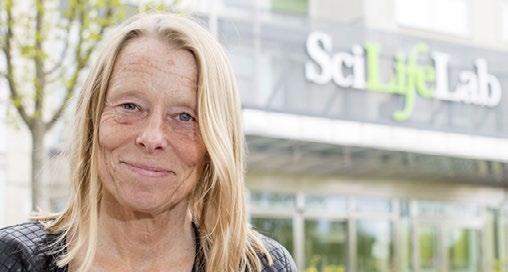
“In Denmark we have a project called Danish Datascience Academy, which we support, and we also support research in Artificial Intelligence at The University of Copenhagen, an area of strength also at The University of Lund and other universities. So I absolutely agree with Siv Anderson. As important it is to support fundamental research, we also have to have an open mind and look new ways”, ends Søren Nedergaard.
“Collaboration across borders in the Nordic region is important, and even if we are a Danish Foundation from 2017 to 2021, we granted 1,1 billion Danish kroner to projects in Sweden and the other Nordic countries” saysSørenNedergaardfromThe NovoNordiskfoundation.
nordic business // 20
Sponsored content
A COMMON GOAL MAKES A STRONG REGION FOR LIFE SCIENCE
The municipals of Copenhagen ad Malmö has quite a different profile, but they are both working towards the same goal, namely, to attract new Life Science businesses to the Øresund region.
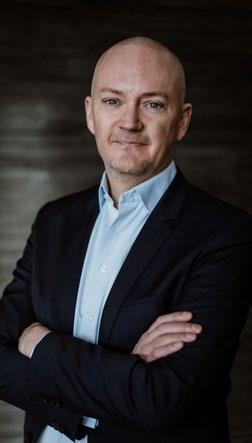
 By Henrik Malmgreen
By Henrik Malmgreen
The growth in the Danish Life Science sector is extensive. This is shown in a report from Greater Copenhagen Life Science Analysis Initiative published in June 2022, and even if both the municipalities of Copenhagen and Ballerup are popular, when it comes to attract new businesses, they are surpassed by the municipality of Gladsaxe. In fact the growth here has been 1.745 jobs to a total of 10.000+ over the last 5 years.
“If You want to create a good business environment, it is extremely important, that the municipal authorities have a firm focus on this matter. This has been the case for many years here in Gladsaxe, where the politicians have defined a strategy that support our ambitions”, says Business Manager from the municipal of Gladsaxe, Karen Brosbøl Wulf. In Gladsaxe one finds some of the oldest industrial areas in Denmark.
Different profile - common goal
On the other side of Øresund in Sweden, we find the municipal of Malmö, that has a slightly different profile. Malmö is a relatively young city, but a city, which over the last 20 years has managed to convert from an industrial profile to a profile, where knowledgebased industries find their haven and feel at home. In Malmö more than 37.000 businesses are registered, and every day 9 more start.
“But also when it comes to placing a headquarter in our city, we hold quite a strong position. According to a survey from The Institute of Øresund, we have managed to attract more than 100 headquarter functions since the Øresund Bridge opened 22 years ago, and of course that also has had an effect on the Life Science community”, says Business Manager Micael Nord from the municipal of Malmö.
“Malmö is one of the fastest growing cities in Sweden, and with almost 200 different nationalities represented, we are a very international oriented city comparable with both New York and London. Besides that half the population is under 40 years old, so we offer a young and innovative environment”
BusinessManagerMicaelNord fromthemunicipalofMalmö.
“Historically Gladsaxe is the home for big Life Science players like Novo Nordisk, Novozymes, AGC Biologics, Zealand Pharma, Ferrosan and GEA, not only, when it comes to housing the company headquarters, but also when it comes to housing the production facilities. This is an essential part of the development plans for Gladsaxe”
BusinessmanagerKaren BrosbølWulffromthe municipalofGladsaxe.
Partnering is the way to success
“Our work on both sides of Øresund is very important. We have to focus on the bigger picture in order to benefit the most, and we have to look outside our own municipal boundaries. That is one of the reasons why we have entered the Medical Valley Alliance”, says Karen Brosbøl Wulf. She stresses the importance to work with as many partners as possible, being both municipals and organizations like Copenhagen Capacity.
In Malmö Micael Nord points out the importance to work together on the marketing side, just as it is the case with job fairs, where the city works together with the city of Copenhagen and organizations like Dansk Industri and Greater Copenhagen. In that sense Micael Nord also find it important to be able to offer much more than just a job to newcomers, namely housing and schools as well as an effective infrastructure.
nordic business // 21
Sponsored content
Photo: Fredrik Johansson
MANUFACTURING AND INDUSTRIAL SYSTEMS ARE THE NEW BATTLEGROUND BETWEEN HACKERS AND COMPANIES
Companies have historically been attacked through networks and IT systems, but today the operational technology (OT) used in production is the new battleground. The solution is a defence in depth, an approach that works with multiple layers of defence based on the international security standard IEC 62443.
Today, the question is no longer whether you will be hit by cyberattacks – but when. And consequently, which systems will be hit and how to deal with it. Hence, it is crucial to be methodical in defending all company's systems, from the administrative level to production. The international security standard IEC 62443 for automation and production systems provides a good foundation for building your lines of defence.
Technology specialist Morten Kromann at Siemens said, ‘Cybercrime is now a very real threat to the production on the
factory floor. It's important to act now, if you're not already doing so – and to scan your system setup to get an overview of your devices and their vulnerabilities and potential threats.’
He continued, ‘Once you have an overview, you can make risk assessments and prioritize areas for action. The most important activity is to separate administrative systems from production systems. Most cybercrime targets traditional corporate IT systems – and if production systems are linked to these with no security measures, it is an open door for cyber criminals.’

nordic business // 22
Sponsored content
Defence in depth
Security standard IEC 62443 is a general approach to OT security that works independently of a technology platform. The standard recommends several security levels that can be used to define a company’s defence. The approach to security is based on probability, impact, and priority of action.
‘The method is risk-oriented,’ said Morten Kromann. ‘It looks at how you might be attacked, such as a firewall breakdown or an attack on a SCADA system, the probability of it happening, and the potential consequences of an attack, such as a sewage leak or a chemical spill. These are subsequently graded against various levels.’
He further added, ‘An example could be the production of a PLC. Here, the process is to make the printed circuit board, wrap plastic around it, apply code to the printed circuit board, and then package it. In this example, it is the coding on the printed circuit board that requires the highest level of security. If the encoding on the printed circuit board is infected, it could have serious consequences for the company as well as its customers.
In this case, a particularly secured area should be set up with added access and security requirements, such as a metal cage.’
At Siemens, the defence of OT comprises three areas: production/ plant security, network security, and system integrity.
To ensure production security, several methods are employed to prevent unauthorized people from gaining physical access to critical components – from general building access to securing particularly sensitive areas using key cards. To secure networks, it's important to establish protection of the systems that are easy to access and to protect automation networks from unauthorized access. To assure system integrity, integrated security functions can be integrated to protect against unauthorized configuration changes. These functions prevent copying of configuration data and make it easier to notice attempts to manipulate files.
Comprehensive competencies are required
It is generally important for manufacturing and industrial companies to match up with partners that have the breadth and depth to manage the often complex challenges within OT.
Morten Kromann said, ‘When production and technology are integrated in the industrial ecosystem, there are typically many players involved: OEMs that produce machines, integrators that integrate to ERP systems – and everything has to run smoothly at the physical location as well.’

‘So it is highly beneficial to have business partners equipped with comprehensive competencies. Siemens, for instance, has a certified CERT team dedicated to round-the-clock monitoring of all products and updates. This is to ensure immediate action if vulnerabilities are exposed and to make sure that all patches are installed.’
The service technicians at Siemens can review and secure production environments ranging from major nuclear plants to manufacturing and industrial companies.
Morten Kromann concluded, ‘We live in turbulent times – and have previously seen instances of systems, such as Ukraine's electrical power supply, being breached by hackers; or the case of Stuxnet, which attacked Iran's nuclear program. Responsible operation of manufacturing and industrial companies demand that we not ignore these threats, but take action now to counter the threat.’
nordic business // 23
Morten Kromann
Sponsored content
HOW TO CREATE MAXIMUM VALUE FROM YOUR INNOVATION
The business-critical nature of intellectual property (IP) rights in the life sciences sector cannot be overstated. The risks associated with such long development times and the regulatory burdens mean that businesses need access to the highest quality intellectual property advice.
Whether you are in development, seeking investment or already on the market, it is therefore vital to choose the right legal advisers.

nordic business // 24
Sponsored content
What should life sciences businesses look for in an IP law firm?
1. Proven expertise
Technical knowledge in isolation is no substitute for real-world experience of working with a long and varied list of clients in the life sciences sector.
Choosing a specialist in this field means that you will not only get the very best advice but advice that is tailored to the specific nuances and demands of your business and the wider market in which you’re operating. Only this way will you ensure your IP can realise its maximum value.
2. Strategic application
When you work with an IP law firm with a deep understanding of your sector, they will have a sophisticated understanding of the issues you are facing from both a legal and a life sciences business perspective. This means they will always bring a strategic and commercial focus to the advice they provide, which is essential for ensuring you achieve your commercial objectives in the most effective way.
3. Comprehensive service-offering
Working with an adviser that offers both depth and breadth of expertise is highly advantageous because it means that you can access all the IP advice you need under one roof. This will deliver time and cost efficiencies that simply cannot be matched when you are dealing with multiple advisors in multiple organisations.
4. Global thinking, delivered locally
Depending on your market ambitions, either now or in the future, having advisers with a global outlook is important but that doesn’t mean compromising on local service delivery from a team that you can easily meet face-to-face. Don’t settle for anything less than the best of both worlds by choosing a globally connected team with roots in your local market.
At Potter Clarkson, you will find all these things and more. The firm’s Life Sciences department is one of Europe’s largest, including a vastly experienced and expanding team of experts based in Copenhagen, Aarhus, Stockholm and Lund.
Over the past three decades, the firm has earned its reputation in the Nordic region as the IP law firm of choice for life sciences businesses of all sizes, ranging from ambitious start-ups and SMEs through to Big Pharma.
Today, the firm boasts an enviable client list, which includes some of the largest Nordic pharmaceutical and biotech firms, along with leading universities and academic spin-out companies.
Recent accolades
• Nominated as Scandinavia Firm of the Year, Managing IP Awards 2022
• Potter Clarkson partner, Lars Karnøe named Denmark's Intellectual Property Law Expert of the Year by Global Law Experts
• Gold ranking for biotechnology and pharmaceuticals in Europe’s Leading Patent Law Firms report from the Financial Times
Access to a world of expertise
Depending on the nature of your project, you can call upon the advice of hugely experienced attorneys from biotech, pharma, and digital innovation teams alongside the full support of Potter Clarkson’s IP solicitors.

Their in-house solicitors will provide the wider commercial law advice you may need from the earliest stage of the dealmaking process, through to the negotiating and drafting of commercial IP agreements and, if necessary, the robust enforcement of your IP rights.
The team also includes experts who can provide the more specialist expertise you may need including: - regulatory advice - trade secrets - SPCs - orphan drug designation - digital innovation strategy
In addition, an innovative suite of fixed-price products is available to make leveraging the highest levels of value from IP quicker, easier and more straightforward.
Get in touch today to find out how the Potter Clarkson team can ensure you secure maximum value from your innovation.
Our Nordic offices
Convendum, Regeringsgatan 52 The Spark, Medicon Village, Scheeletorget 1 Stockholm 111 56 Lund 223 63
Havnegade 39 INCUBA Navitas, Inge Lehmanns Gade 10 Copenhagen 1058 Aarhus 8000
Email benjamin.hoffmann@potterclarkson.com
nordic business // 25
Sponsored content
BEST NORDIC PODCASTS in ’Science & Medicine’
 ByMalinSjögren
ByMalinSjögren
NORWAY
Clever people share their knowledge about those topics you wish you’ve had time to read up on. The episodes dives into questions, answers and more information about radioactivity, alcohol, religion, illness e.g. Each episode lasts 30 minutes and is released weekly.
The Abels Tårn podcast is produced by NRK Radio. The podcast is your source of useful and useless knowledge with which you can excel in corporate life. Every week, three researchers gather to answer brilliant questions from the listeners. You can listen to all the episodes in the NRK Radio app.

The Norwegian podcast ”Smart forklart” is hosted by Aksel Faanes Persson. The topics are centered around tech & science and based on interviews and great conversations around relevant subjects. New episodes are released bi-weekly and produced by SINTEF.

nordic business // 26
SWEDEN
The Life Science podcast is a podcast from Life Science Sweden - the Nordics' leading newspaper about the Swedish biotechnology, medical technology and pharmaceutical industry as well as related research.

DENMARK
News, background stories and chats hosted by Vetenskapsradion's Camilla Widebeck, Ulrika Björksten and their colleagues. The podcast is produced by Peter Normark and Sveriges Radio P1. Each episode has a duration of 30-45 minutes and are released weekly.


Bakteriekultur
The hosts Marie Chimwemwe Degnbol and Cecilie Glerup dives into research about Microbacteria and by interviewing experts they guide the listeners around our coexistence with the trillions of bacteria that live in, on and around our bodies.
The podcast is published by ’Medicinsk Museion’ and is supported by the Velux grant "Microbes on the Mind" and the Center for Basic Metabolic Research, University of Copenhagen.
This podcast delves into how various topics such as health, tech, activism, religion etc. can affect both society and human beings. The podcast is produced by Peter Ørbæk. The episodes lasts 20-30 minutes and are released weekly.

nordic business // 27
CLINICAL RESEARCH IS CREATING THE CANCER TREATMENT OF THE FUTURE
If cancer survival in Denmark is to continue to increase, it is crucial to have strong clinical research environments and active collaboration between the public and private sectors on clinical drug trials. Along with the development and use of more and more specialised treatments, there has also been a merging of research and treatments. A prerequisite for state-of-the-art cancer treatments is therefore the active involvement of both private companies and public clinicians in the ongoing research. The more, the better. We need to be at the forefront and help further developments in joint collaboration.
Danish cancer patients need cancer re search in Denmark. Research into new treatments for all types of cancer not only makes doctors and healthcare profession als more knowledgeable, it also provides cancer patients with more options, more effective treatments, and greater chances of survival.
‘Research is the foundation for the stand ardised, evidence-based, and accelerat ed approach to diagnosis and treatment represented by cancer programmes today, and it is the foundation of cancer treat ment across the country.’
At Trial Nation, which works to attract clinical trials to Denmark and coordinates between researchers, healthcare profes sionals, and drug developers, great poten tial is seen in attracting more research, but the organisation also emphasises that the work that has already been put into coor dination has helped to ensure more treat ment options for Danish cancer patients.
“Without clinical research into treatments aimed at curing or preventing the progression of cancer, treatments would have stalled. That's why we're pleased to have such skilled clinicians and doctors in Denmark who are taking the long road every day in finding the best future treatment for each type of cancer. Moreover, the best healthcare professionals improve by carrying out their own research and learning more about new methods and treatments, which benefit cancer patients now and in the future.”
IdaSofieJensen,CEOoftheDanishAssociation ofthePharmaceuticalIndustry
Trial Nation's annual report notes a 42 per cent increase from 2018 to 2020 in the number of clinical trials among oncology clinics affiliated with Trial Nation. Patients as well as healthcare professionals and de velopers all benefit from participating in clinical trials, a value that has been par ticularly noticeable for patients in oncolo gy departments across the country.
Lars Bastholt, Chief Physician of the oncol ogy department at Odense University Hos pital, said, ‘If we hadn't participated in the clinical trials, our patients wouldn't have had access to the treatment until five years later.’
More trials – fewer patients – more specialised treatments
Throughout recent years, there has been a clear tendency in clinical research, not least within cancer research and treat ment, for there to be more trials, but fewer patients as part of the trials. This is a good sign, emphasises Ida Sofie Jensen.
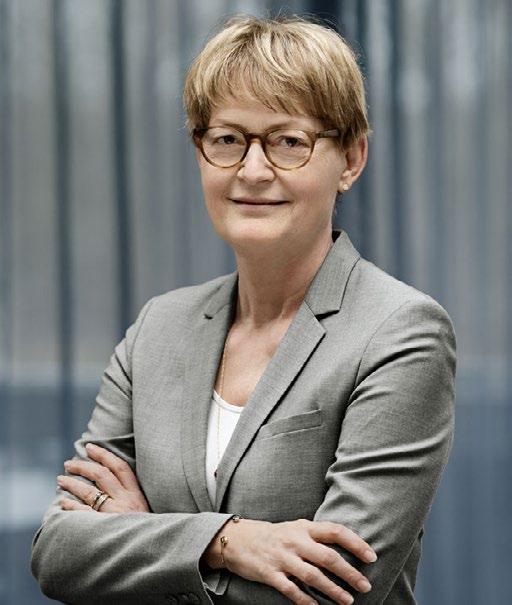
nordic business // 28
Ida Sofie Jensen, CEO of Lif
The CEO of Lif said, ‘Particularly with in cancer treatment, it is clear that treat ments are becoming more specialised and tailored to the individual type of can cer and even the individual patient. This is reflected in the fact that we are seeing more clinical drug trials in Denmark, but fewer patients in the trials. Our under standing of cancer is much more detailed today – for instance, we now know that leukaemia isn't just one disease, but can be categorised into more than forty subtypes that potentially need different treatments in order to be effective. As a result, more and more specialised medicinal products are developed for small patient groups –which also provides future cancer patients with better treatment options.’ He added, ‘But these things don't devel op on their own. If we want specialised research to be at the very top – and to succeed in attracting it to Denmark – we need to support research environments and encourage collaborations between companies and clinicians.’
“We've seen a steady increase in the number of clinical trials within cancer treatments in Denmark during the time Trial Nation has existed and carried out monitoring of the number of trials in the field. Each trial represents an opportunity for treatment, often a treatment that becomes commercially available years later.”
MariannePilgaard,CEOofTrialNation
Marianne Pilgaard agreed with this senti ment, saying, ‘We have incredibly talented, internationally strong researchers within the field of cancer in Denmark.’ She point ed out that she is particularly impressed by both the early investment in genome sequencing, which has given Denmark a very strong lead in terms of personalised medicine, as well as Denmark's strong po sition within immunotherapy.
Research equals survival
The survival of cancer patients has gen erally improved considerably over the past 15-20 years, which is clear evidence that clinical research is working and that research is contributing to better treat ments. In 15 years, men's survival rate has gone up from 69 to 82 per cent five years after diagnosis. For women, it has increased from 72 to 83 per cent, accord ing to figures from the Danish Cancer Society. Here, faster diagnosis and better treatments are highlighted as reasons for the upturn in survival.
‘The positive outcome of clinical research is better treatments, longer survival and more knowledge in the field, which in turn helps future research to narrow down and create new, more precise and innovative treatments.’
Figures from the organisation PhRMA show that up to three-quarters of the in crease in survival is due to advances in cancer treatments, including the devel opment of new medicine.

FACT
Lif is a trade organisation for Danish and foreign research-based phar maceutical companies in Denmark. The common denominator is that Lif's members all develop new in novative medicines for prevention and treatment. When research, development, and innovation are translated into health, growth, jobs, and prosperity, it is to the benefit of Danish society as a whole.
Denmark has a unique leading po sition within life science, a position that is based on strong companies that research, develop, and man ufacture medicinal products and medical equipment for patients world-wide. Lif therefore works to ensure that the organisation's 38 members can research, develop, produce, market, distribute, and provide information about new and improved medicinal products.
Read more at lif.dk
nordic business // 29
This problem is immense. Action is needed at the very front line of primary healthcare. Finnish-based IVD company Aidian produces and markets a range of analytical tools that can address this and a number of other health challenges
According to the Ministry of Health, antibiotic resistance is one of the major threats to public health globally. If antibiotics aren't used with due care, bacteria can develop resistance, which in turn can cause harmless infections to become lethal. All too often, antibiotics are prescribed unnecessarily, leading to an increase in antibiotic resistance with potentially huge and unpredictable long-term consequences.
‘It is estimated that upwards of fifty per cent of all antibiotics prescribed are incorrect or unnecessary,’ says Helle Jensen, Senior Key Account Manager Nordic at Aidian Denmark, which develops and markets tools for point-of-care testing (POCT). These are diagnostic tools for the healthcare sector that can quickly provide a guideline for how a patient should be treated.
Overuse must be reduced
According to the Ministry of Health's website, it is estimated that around 700,000 people worldwide die each year from infections caused by bacteria that have developed resistance to antibiotics. WHO estimates that this number will grow to 10 million people by 2050. It is therefore crucial to combat resistance, which can be accomplished by reducing the overuse of antibiotics.
‘This is precisely where our analytical tools are of great help to healthcare professionals in the primary healthcare sector, which often finds itself tasked with assessing whether a citizen should be medicated or hospitalized. By using POCT tools, healthcare professionals can obtain a quick and accurate assessment of the treatment that is needed before the patient may be passed on in the system,’ says Helle Jensen.

nordic business // 30
POINT-OF-CARE TESTING IS AN EFFICIENT TOOL IN THE GOAL OF PREVENTING ANTIBIOTIC OVER-USE.
Sponsored content
Less pressure on doctors
Needless to say, making a clinical assessment of the patient's treatment needs as early as possible in the treatment process ¬–preferably before it even begins – decreases the risk of prescribing unnecessary medication. This is true not just in hospitals and emergency rooms, but also for general practitioners (GPs) who often face requests for antibiotics.
‘If a patient comes to the consultation convinced that they need antibiotics, a POCT analysis can support the doctor in saying yes or no based on a neutral analysis, without having to discuss it with the patient, who may be suffering from a viral infection and not a bacterial infection,’ Helle Jensen explains. This is undoubtedly a benefit for GPs, who will be relieved from the pressure to write unneeded prescriptions.
Patient-centred tests are key
She adds that an estimated 80-90% of all prescriptions are made in primary care. If serious efforts can be made in this area, it will have a strong impact on reducing the overuse of antibiotics. Meanwhile, the analytical tools provided by Aidian cover a wide range of applications, and a health crisis such as COVID-19 has helped boost the use of their tests.
‘For instance, we offer tools that can analyze a cancer patient against twenty different parameters in just five minutes, which makes it possible to, among other things, assess whether it is safe for a patient to attend chemotherapy treatment in a specific situation,’ Helle Jensen concludes. The POCT tools are, in other words, not only aimed at acute needs, but are also user-friendly, which allows patients to use them in their own home or in a nursing home.
A wide range of tools
Aidan offers a range of POCT tools and associated tests, including the QuikRead Go Multianalysis instrument that can measure CRP values in no more than two minutes as well as Hb, HbA1c, Strep A, and iFOBt. Other tools include the SD BIOSENSOR STANDARD F tool for testing influenza and COVID-19, among others, and the Hemoscreen (Pixcell), a hematology tool that analyzes 20 different parameters in under five minutes.
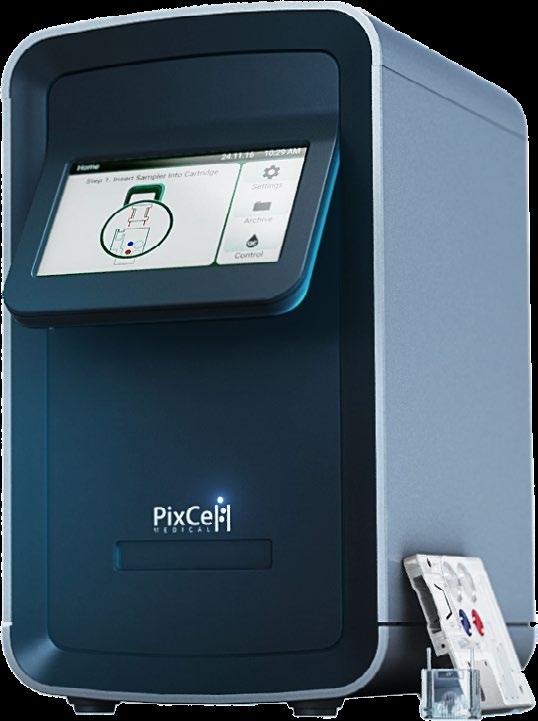
The range of applications is thus very broad, and the tools are aimed at GPs, emergency services, hospitals, pre-hospital functions such as ambulances and medical cars, as well as emergency teams, and elderly people in nursing homes or in their own homes in the form of home monitoring. The manufacturing is carried out at Aidian as well as by external sub-suppliers.
Read more at: www.aidian.dk
Helle Jensen explains that an estimated 80-90% of all prescriptions are created in primary care. If serious efforts can be made in this area, it will have a strong impact in reducing the overuse of antibiotics.
nordic business // 31
Sponsored content
“Quiet Quitting” and the “Great Resignation” are current trends that have businesses across the globe pondering why workers are leaving or proving harder to attract amid fierce competition for staff at all levels. There are execs quitting the top of the Nordic business world too, whether voluntarily or not. Here are five individuals going up or down the executive lift.
UP / DOWN
WINNERS AND LOSERS IN NORDIC BUSINESS IN 2022
 By Bibi Christensen
By Bibi Christensen
5 nordic business // 32
Norway’s first football billionaire
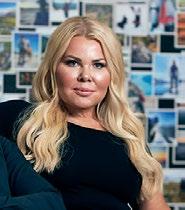
According to Kapital magazine, Norwegian footballer Erling Braut Haaland , is definitely checking in to the world of sports. The magazine estimates that the “golden foot from Jæren” is now Norway’s first football billionaire not least thanks to being signed to English Premier League club Manchester City this summer and lucrative sponsorship deals. Just 22 years old, Haaland is deemed unique for a Norwegian footballer in how fast he has shot up the earnings league at such a young age, according to Kapital.

Quit while you’re ahead I
Barely had Pernilla Nyrensten been voted Sweden’s top female entrepreneur before shocking many by announcing her exit as CEO of outdoor clothing brand Revolution Race in August, causing the company’s shares to dip despite continuing sales growth. Nyrensten made history last year as the first woman in Sweden to list her own company on the stock exchange but now wants to focus on “other priorities” that she feels she has neglected, referring to having worked “24/7” to build the company. She remains on the board.
Quit while you’re ahead II
Another very successful Swede, Jonas Tellander, quit back in February saying that, after some personal time out, it was time for a change after 17 years as CEO of Storytel, one of the world’s biggest audiobook and e-book services which he cofounded in 2005. But it’s taken until now to find a permanent replacement for him, US-Austrian Johannes Larcher, who comes with an impressive background leading the international expansion of streaming services Hulu and HBO Max. That seems to signal major global ambitions for Storytel. And Tellander remains on the board of his “baby”.
Norway’s richest man prompts a taxing debate


Norway is known for making the tax records of its citizens publicly available. But the man at the top of the wealth list, Kjell Inge Røkke , has now decamped to low-tax Switzerland, triggering a fierce debate in his native country about taxes on its wealthiest residents. Røkke, head of offshore drilling and shipping conglomerate Aker, denies that Norway’s taxes played a role in his decision to quit the country and head for Lugano’s idyllic lakeside.
These shoes are made for running
Kasper Rørsted , one of Denmark’s most internationally successful CEOs, surprised everyone by announcing his departure as head of German sportswear label Adidas in 2023, some 3 years ahead of his contract ending. He has been credited with leading the brand’s digital transformation but admits to a challenging time for the company lately, with the Covid pandemic, supply issues, challenges on the massive Chinese market and geopolitical tensions prompting a need for a “restart”.
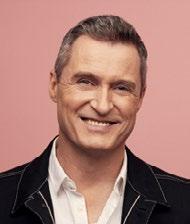

TECH SHAPES OUR FUTURE AND WE CAN’T BE PASSIVE ABOUT THE SECTOR’S GENDER IMBALANCE
When a sector like the tech industry has such a major impact on the lives of its users and all citizens, it’s particularly important for that sector to reflect its users and embrace different people with different backgrounds and takes on what they are doing, says Margrethe Vestager, the EU Commissioner for Competition and Europe’s digital future.
By Peter Klar
As the EU Commissioner for Competition, Margrethe Vestager regularly personifies the EU countries’ focus on – and perhaps opposition to – the business models of multinational tech companies and their influence on the private lives and rights of ordinary citizens.

Margrethe Vestager also chairs the ‘Commissioners’ Group on A Europe Fit for the Digital Age’.
In other words, tech dominates much of the Danish EU Commissioner’s working day, and the challenge of getting more women into the tech industry is a recurring topic on her agenda.
There are solid reasons for that – both quantitative and qualitative ones: “On a purely practical basis, there’s an incredible demand for people with technology skills. That applies to a lot of different areas, and that massive demand will continue to be there. It’s in cyber security, research in quantum computing, software development and implementation, corporate development of new business models and so much more. We need to recruit far more people for the tech industry, and there’s still a large and untapped potential among women who make up just 17 percent of workers in the European tech sector,” Margrethe Vestager says.
nordic business // 34
Tech shapes our future
The qualitative reasons, according to Margrethe Vestager, are tied to the fact that, more than any other sector, tech shapes our future. That means we can’t be passive about the obvious gender imbalance in an industry that has such a major impact on everyone’s lives.
“Just think about the discussion we have in Denmark about what happens to the public sector as it goes digital. How do you contact it, what do you need to be able to do, how do you go about it, what gadgets do you need? In that sense, if a sector has such a major impact on the lives of its users, it’s important for that sector to reflect its users and consist of different people with different backgrounds and takes on what they are doing.”
Margrethe Vestager believes that, as citizens and as a society, we should be as concerned about diversity in the tech industry as we are when it comes to our parliaments.
“If the parliament had the same make-up as the tech sector, we couldn’t live with that. If far too many men are in charge, that’s a problem for us, and we need to have more generations represented too, because the laws made by parliament shape the future for all of us, so of course we need more women.”
Developments in tech create new roles
In the case of Denmark, more diversity would also support the ongoing process of maintaining and strengthening a high level of digitalisation.
“Denmark has come a long way in digitalising, but we have also been doing it for a long time. You need to be careful not to be overtaken by others with late-comer advantages in not having a legacy and a system holding them back. If you look carefully in Denmark, we’ve had to use a bit of gaffa tape here and there to get things going, because some of our basic systems are older. We need to keep developing the architecture to make it attractive for more and more people to join in that work.”
“Coding and being a program developer are very different now compared to just five or ten years ago. The technology is much more modular now. You can do more things with software now, and there are many more roles in the industry. It’s important for the tech industry to get a wider understanding of the types of roles we need when we’re as digital as we are.”
Code weeks are not enough
So, what should the tech sector, and the society that it is part of, be doing to achieve a more gender-balanced approach to recruiting and filling roles in tech?
“We always say that we need to start at school, and of course that’s true. But we don’t really have time to wait for that work to bring us results. We need far more. But it’s really positive that ideas like some form of code weeks, where children and young people get together to code, build robots and make things gel, have now spread across Europa. But we also need to make sure we offer enough places to study when children grow older and want to access education.”

nordic business // 35
New people from other fields
But in the short term, more could also be done to recruit more adult women into tech, Margrethe Vestager believes.
“We need companies to be open to taking in new people from other fields of work who have an interest in technology. That means setting up processes for easing these people into tech through learning by doing and good old-fashioned peer training, and then building courses on top to give them the formal skills too. I think that will be a hugely important and effective approach, exactly because working with technology is becoming a wider and wider field, as all these sectors are now being digitalised. There’s tech in agriculture, transport, health, energy and in the whole way our industrial sector now works. It makes great sense to bring in people with different professional backgrounds who are interested in and keen to work in tech.”
Role models and visibility
The ball is now in the court of tech companies themselves. They are the ones that can bring about the biggest change in the shortest amount of time, says Margrethe Vestager, and she fully supports the two most common approaches in the tech sector: recruitment processes need to be more open to diversity, and more women in top and middle management and key professional roles can serve as role models for other women to more easily see themselves as having a future in that environment.
“Companies shouldn’t wait for others to solve this problem, because that will take far too many years. So it’s great that they are taking action. It also makes a clear point to show that you can be a role model without being a CEO with the hardest degrees from the most famous universities. A skilled engineer who works in middle management or is an expert in their field is a super role model. Women are already there in tech, and the more visible that is, the more attractive it will be for other women too.”
Diversity is good for everyone
Margrethe Vestager also points to a positive aspect of working with diversity that may be a bit overlooked:
“The thing about diversity is that it also benefits the people who are already in the tech industry. To put it this way, it helps them see themselves, far more, not as part of a group but as individuals and workers who also have an individual responsibility for being who they are in all these development and innovation processes that are typical of tech. I tend to say that equality and diversity are just as important for the majority that are already there as for those who are underrepresented and now coming on board.”
We always say that we need to start at school, and of course that’s true. But we don’t really have time to wait for that work to bring us results. We need far more.
Margrethe Vestager, EU Commissioner for Competition and Chair of the Commissioners’ Group for a Europe Fit for the Digital Age

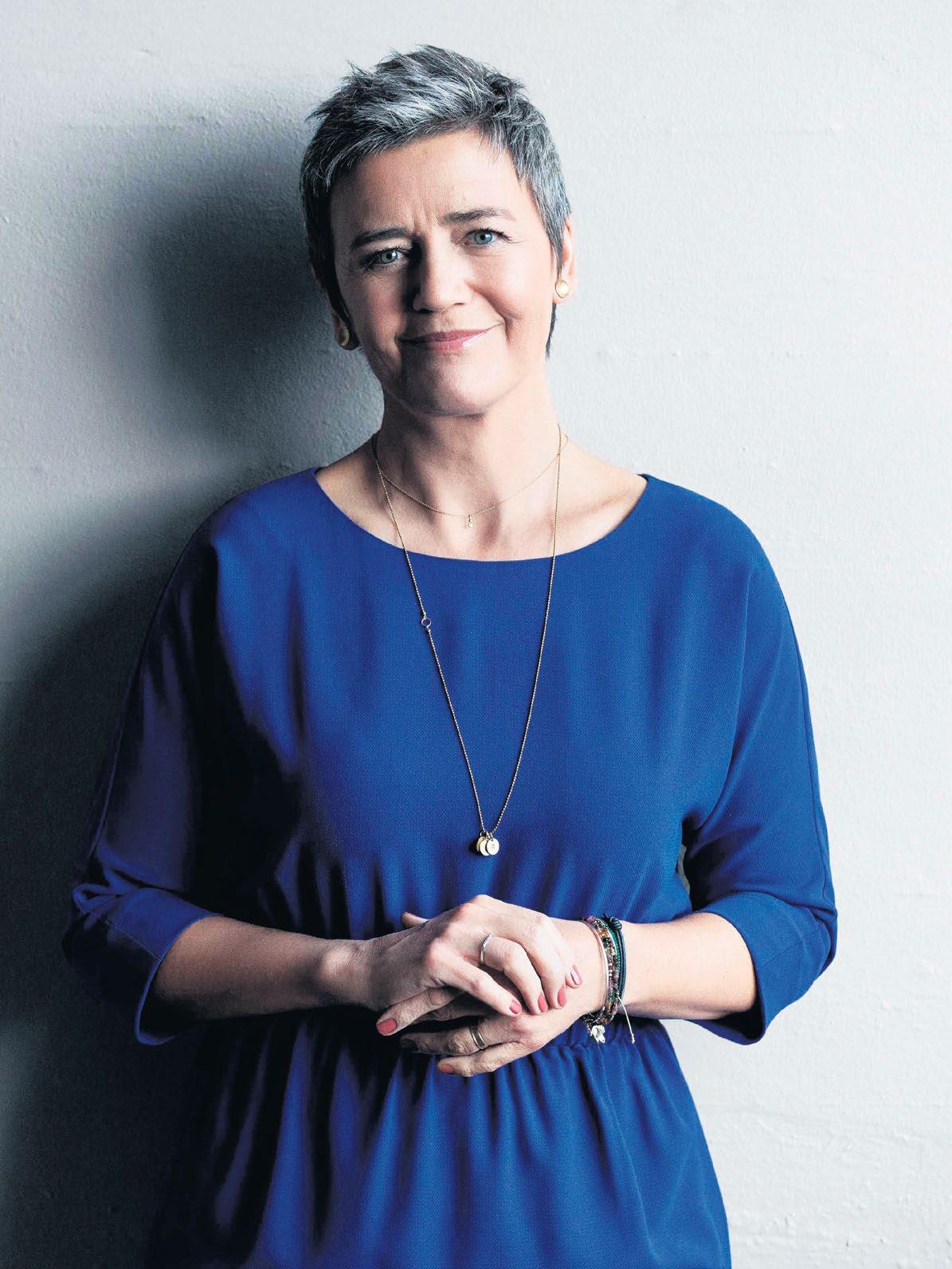
10
INSPIRATIONAL NORDIC WOMEN IN LIFE SCIENCE & TECH
By Julie Brix
The Nordic countries are some of the most gender-equal nations in the world, and the region’s booming tech scene has captured global attention. Yet the gender gap is still a huge issue –particularly in certain fields, like Tech & Life Science, where women are traditionally underrepresented.
Some of the key drivers for girls wanting to pursue Science, Technology, Engineering and Mathematics (STEM) skills is having role models and support both at home and in the classroom. It is easier to imagine a career in the field if you see someone you can identify with who has an exciting role, has done groundbreaking research or founded a tech startup. The number of girls interested in STEM skills almost doubles when they have role models, compared to those who do not.
Girls with role models are also more passionate about STEM subjects and are more likely to imagine themselves working in Science, Technology, Engineering and Mathematics.
Fortunately, there are already many Nordic women who have successfully entered the Tech & Life Science industry and can take the lead as role models for future talent!
On the following pages, we have selected 10 truly inspiring Nordic women in Tech & Life Science who have already achieved great respect, impact and results, while coming from very different backgrounds and spanning a wide range of expertise within the Tech & Life Science industry.
nordic business // 38
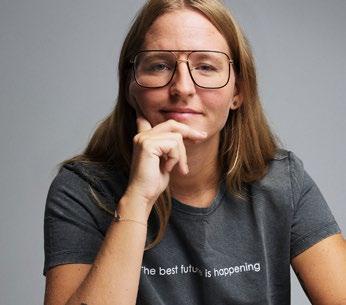



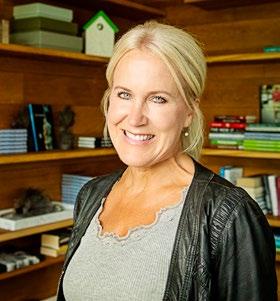

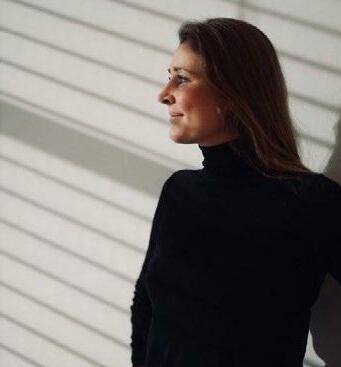

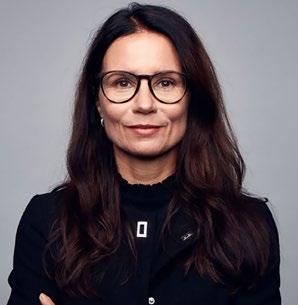
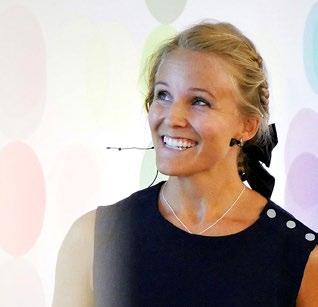
nordic business // 39
Josefin Rosén
Principal Advisor in Advanced Analytics and Artificial Intelligence at SAS Institute
Many business leaders are starting to understand that Artificial Intelligence (AI) will be impact the future in most organizations. Few know how to get started: Josefin Rosén does. She has passion for unlocking hidden insights from all kinds of data and is specialized AI and Machine Learning, including deep learning and Natural Language Processing. As Principal Advisor in Advanced Analytics and Artificial Intelligence, Josefin helps customers from different industries unleash the potential of advanced analytics while managing the challenges arising when you are working with large quantities of unstructured data. She is also involved in academic discussions and has earned a PhD in predictive chemistry from the University of Uppsala before dedicating herself to positions in the pharmaceutical and IT industries. At events and in media interviews, Josefin has spoken out on issues related to the advance of machine learning and AI. She currently applies this knowledge on a day-to-day basis at SAS Institute as Principal Advisor in Advanced Analytics and Artificial Intelligence.

Helena Samsioe
Founder and CEO, GLOBHE
Helena Samsioe is known as the Drone Queen for founding GLOBHE, Sweden’s global drone service provider in 2015. Samsioe has bootstrapped the company into a revenue-generating business, running the world’s first AI drone delivery. The firm’s patent pending identifAI service helps the United Nations and other humanitarian actors better manage and identify natural disasters. Helena Samsioe studied Information and Communication Technology as part of a master’s degree in Disaster Management.

Katarina Ageborg
Executive Vice-President, Sustainability and Chief Compliance Officer; President AstraZeneca AB
Katarina Ageborg, who was named CEO of AstraZeneca AB, the Swedish affiliate, in August 2018, has been a part of AstraZeneca’s global management team since 2011. When she joined AstraZeneca in 1998, she was the owner of her own law firm and had never worked in the pharmaceutical field before. But both the work and the industry appealed to her. Sustainability is critical to AstraZeneca’s way of doing business, and by maintaining her position as the company’s Executive Vice President, Sustainability and Chief Compliance Officer, Ageborg is able to stay on top of it. “It’s a good platform for me to see Sweden as a model for sustainability,” she statet in an interview with Nordic Life Science News. Katarina Ageborg is also focused on improving gender equality and diversity and strives to getting AstraZenica known as a more open and inclusive company, to attract the best people.

nordic business // 40
Photo:TobiasBjörkgren
Cecilia Qvist
Global Chief for Markets, Spotify
As Global Head of Markets, Cecilia Qvist oversees Spotify’s global growth strategy – both in existing and new territories – with a focus on international expansion, product localization efforts and sustainable growth. Today Spotify, named one of TIME’s Genius Companies of 2018, has 217 million listeners and 100 million subscribers around the world. In 2018 and 2019, Cecilia Qvist led the company’s expansion into more than 18 new countries, including Romania, Israel, Vietnam, India and several locations in the Middle East and Africa. Spotify now operates in 79 countries. Cecilia Qvist serves as a member of the board of directors of Catena Media and a member of the advisory board of Webrock Ventures. In 2019 she was chosen as “The Most Impactful Director” by Swedish business magazine Veckans Affärer.
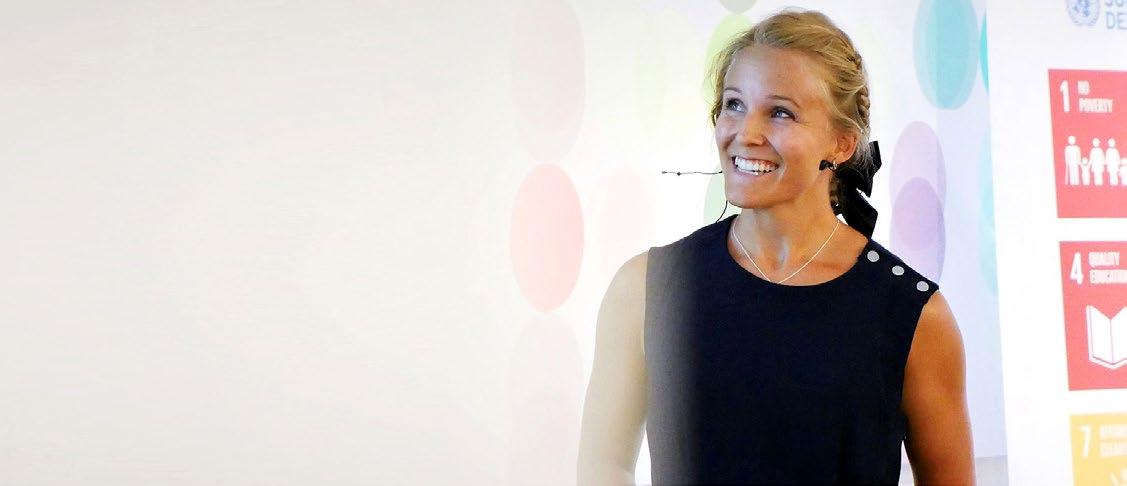


Sibel Karina Arnes
Health & Life Science Investment Professional at Adelis Equity Partners
Sibel joined Adelis Equity Partners in April 2022 where she holds a position as Health & Life Science Investment Professionel. Prior to this position she worked at Novo Holdings A/S for 5 years as an Associate in Principal Investments. She participated in deal sourcing and execution as well as in managing and developing the growing portfolio of investments. Prior to joining Novo Holdings A/S, Sibel worked as a management consultant with Bain & Company in Copenhagen. During this time, she worked primarily with PE due diligences and post-acquisition projects for portfolio companies, as well as Corporate Strategy for large Nordic companies. Before this, Sibel worked as an Associate Consultant for Dalberg Global Development Advisors in their Copenhagen and New York offices. Sibel holds a BSc in International Business & Politics and a MSc in Finance & Strategic Management from Copenhagen Business School
Christine Spiten Senior Corporate Advisor, Plastic & Circular Economy at WWF
Norwegian engineer Christine Spiten cofounded the underwater drone company Blueye Robotics in 2015. Spiten was interning at marine giant Kongsberg when she first used underwater ROVs and was inspired to develop drones controlled by smartphones. Blueye Robotics has raised $6 million to date. The company’s Pioneer drones can dive to depths of over 150 meters (around the height of London’s BT Tower). Spiten took robotics classes at UFRJ in Brazil as part of her engineering M.Sc in Industrial Economics and Technological Management. She sits on the advisory board of environmental research initiatives REVOcean, Passion for Ocean as well as Norway’s government-led digital business board Digital 21. Christine holds a Master of Science from Norwegian University of Life Sciences.
nordic business // 41
Christina Trojels-Hansen EIR ARCH Venture Partners
Christina is known as being exceedingly passionate about innovation and entrepreneurship within life science. By combining her strong background in life science with her experience in new business development, IPR and venture creation she co-founded and took up the role of CEO at the biotech Oscine Therapeutics, which develops cell therapies for diseases in the central nervous system. In 2020 the company was sold to the Seattle-based Sana Biotechnology in a trade amounting to nearly DKK 1.3bn.
She was selected for Endpoints 20 under 40 in 2021 and as Berlingske Business Talent 100 in 2017.
She has identified and drafted Novo Pre-Geed grant applications and guided early spin out efforts for several academic projects and companies that today have had major Series A investments such as Pretzel Therapeutics, Adcendo, Stipe and ISD Immunotech.
Lene Gerlach PhD, Partner at EIR Ventures
Lene has a PhD in Neuroscience from University of Copenhagen. She has more than 25 years’ experience within the life science industry as a research scientist, patent attorney, business developer, consultant on university spin-out corporations and has held management positions in several biotech companies.

Lene has been Vice President in Action Pharma (sold to Abbott in 2012) and Visiopharm, a global AI Healthcare company. Since 2014, Lene has worked as a venture capitalist having financed more than 35 companies. She comes with an extensive board experience having headed 18 companies as Chairman.

nordic business // 42
Mette Lykke CEO, Too Good to Go
Mette Lykke is the CEO of the anti-food waste company Too Good To Go since 2017, where she leads more than 300 employees. Through the app, Too Good To Go connects its users with delicious unsold food from a variety of shops and restaurants all over Europe. The app has more than 12 million users and the service is available in 11 countries. Before joining Too Good To Go, Mette Lykke cofounded the sports app Endomondo in 2007, which was sold in 2015 for half a billion Danish kroner to the American sports brand Under Armour, where she was senior vice president until 2017. Mette holds a Master of Political Science and has previously been a researcher and journalist at JyllandsPosten and a consultant at McKinsey from 2006-07. In 2018 she was elected to the publisher’s Gyldendal’s Board of Directors.

Nana Bule CEO, Microsoft Denmark & Iceland
Nana joined Microsoft in 2002, holding various leadership positions in commercial sales and product marketing. She has been part of the Executive Board since 2013 – most recently in the role of Director of Marketing & Operations (COO). In addition to her position as CEO at Microsoft Denmark, Nana serves as a board member of EnergiNet, Arla and Wonderful Copenhagen and is also a member of the DI Board of Directors and the Corporate Policy Committee. Nana graduated from Copenhagen Business School and Copenhagen IT University and holds a Board Governance qualification from IMD. She is also active within the startup ecosystem as a consultant for entrepreneurs and investors.

nordic business // 43

INVESTING IN SMALL CAP STOCKS
Small cap stocks have fewer publicly traded shares than mid or large-cap companies. Shares of small and mid-cap stocks may be more affordable for investors than large caps, but smaller cap stocks also tend to have greater price volatility.
By Per Hansen, Investing expert at Nordnet
Here are some of the points that investors can take into consideration when investing in new and small cap companies that are, or are planning to be listed:
• Investing in companies that are soon to be listed, is high risk. When new companies are portrayed by themselves and their advisers, the opportunities often seem attractive. Beware of too much bias praise.
• The smaller a company is, the less backing it may have to carry the company's future. At the same time, there may be a shorter history than the companies that are already listed on the stock exchange. New companies are still growing and could either fail or be successful.
• Large risks must be offset by large returns. The difference in return between 5 companies that have already been listed for many years, compared to 5 companies being listed now, will fall out to the already listed companies, if you have to measure returns in relation to risk in the future in, for example, 3 years. This must be reflected in a very low price at the time of introduction. It is a good idea to be a bit skeptical of the share price.
• The smaller the companies, the greater the risk that it is the private investors who will have to carry the listing home. This could result in price fluctuations in the share. On average, new and larger companies sell 90% of new shares to long-term institutional investors and 10% to private individuals. When it comes to very small companies, the distribution is called 0/100. In the short term, this means that there is a lack of stable investment money, which means, among other things, that the share price can have a larger fluctuation, in small companies.
• It is therefore important to understand the rules of the game in connection with a stock exchange listing. Optimism and hype is great at the time of introduction, and many assume that demand exceeds stocks for sale so much that there is free money to be had. However, free money does not exist. Part of the visible interest is artificially created and disappears as quickly as it comes. It is a good idea to consider whether what you are buying is also something you can see yourself investing in, in addition to the first listing day.
Key Take Aways
Lack of liquidity remains a struggle for small cap stocks, especially for investors who take pride in building their portfolios on diversification. This difference has two effects:
Small-cap investors may struggle to offload shares. When there is less liquidity in a marketplace, an investor may find it takes longer to buy or sell a particular holding with little daily trading volume.
The managers of small-cap funds close their funds to new investors at lower assets under management (AUM) thresholds.
nordic business // 45
1
2
OSMIUM, THE EIGHTH PRECIOUS METAL
Investment, jewellery, and luxury: it's time to take a professional look at the world's rarest precious metal and its growing international market.
Are you a fund manager, asset manager, or interested tangible asset investor?
Osmium-disk
Are you a fund manager, asset manager, or interested tangible asset investor?
You may be interested in taking a look at osmium:
Over the last eight years, the demand for osmium, a newly marketed precious metal, has slowly built up in Europe and much of the world. Initially only used in the production of luxury wristwatches from Ulysse Nardin and Hublot, it was for a time only known to insiders of the new fringe market. In years since, osmium’s price has grown by almost 500 percent. It’s worth noting that osmium’s market volume is small: Even if the 22 tonnes of osmium estimated to be available in the Earth’s crust were to be sold off completely, the total would only amount to 40 billion euros based on its current price.
Being one of the scarcest resources on the planet, osmium reserves could run out in as little as ten years’ time. Meanwhile, the demand for crystalline osmium is rising. In Switzerland, raw osmium is converted into crystalline osmium following a complex purification process, much like what enables carbon to be turned into diamonds. This crystalline form of osmium has been used to replace diamond carpets or “pavés,” in the
diamond market, a market already under pressure due to manmade diamonds. Crystalline osmium also acts as an unforgeable tangible asset investment.
The diamond pavé is always used when a surface needs to sparkle. Osmium’s natural sparkle is one of its best-known qualities. It can be used in jewellery without losing its shape and can be removed again as a tangible asset metal when sold. More and more brands are following the trend of using osmium.

In addition to this sparkly attribute, osmium in crystalline form is unfalsifiable. At 22.61 g/cm3, osmium is the densest element on Earth. Therefore, the flat structures of osmium bars cannot be filled with any other metal.
Crystalline osmium’s state-of-the-art certification process confirms its purity and uses its crystalline structure as a sort of digital fingerprint. Each piece of osmium is absolutely unique and digitally identifiable. The identity of each osmium piece is made available to international customs authorities during the import and export of crystalline osmium.
nordic business // 46
Sponsored content
The tangible investment products:
Geometrically perfect flat discs with uniform crystallisation height. The material crystallised in Switzerland is certified and prepared for international markets at the Osmium Institute in Germany. Ultrahigh-resolution microscopes from Keyence are used to create 2D and 3D scans of the crystalline structure of each piece of osmium. Every angle and every height of a crystal is precisely measured and mapped.
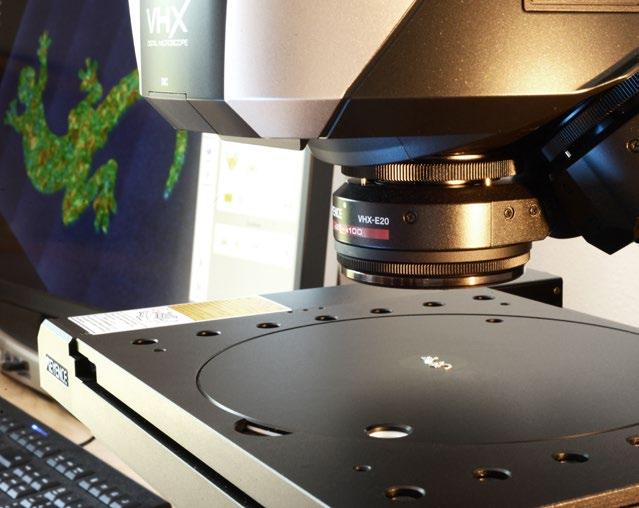
Each piece of certified osmium is given an eightdigit alphanumeric code, the Osmium Identification Code, (or "OIC" for short). The codes are stored in the Osmium World Database and contain information such as the dimensions of the piece, its mass, the 3D scan, and the current net value based on the current prices for osmium crystallization.
We are talking about “Made in Switzerland and Certified in Germany.”

Osmium is a precious metal, just like gold and silver, only even more precious. Its impressive qualities go further: Osmium has the highest abrasion resistance and the highest compression modulus of all elements, shields against gamma radiation, and is a superconductor at low temperatures.
Crystalline osmium is the purest form of osmium, with a minimum purity of well over 99.9995%. Moreover –and this is crucial for the jewellery and luxury industry – its sparkle is breath-taking in the sunlight. That is why it is known colloquially as the "Sunshine Element.”
Security
Alongside the Osmium Marketplace, the Osmium World Database plays a key role in securing crystalline osmium’s global trade: Whenever osmium changes hands, the ownership and possessorship of the piece is updated. This is done with the help of a private key, the so-called Owner Change Code (OCC for short). The database was set up in cooperation with the customs authorities of the USA, Canada, Australia, the EU, and the UAE.
Today, about 97 percent of the crystallized element is in the vaults of tangible asset investors. While already established in Europe, the market is expanding towards China and the USA. The tangible asset investment, jewellery, and luxury markets are looking forward to exciting times.
Osmium institutes offer free information and answer all questions about the investment, earning opportunities, resale, and use of crystalline osmium. 1,500 certified sales partners on five continents are happy to help you.
Osmium is now available in Denmark! You can find more info and get in touch here: www.osmium-denmark.com
For general information you can visit www.osmium.com, or call the international hotline: +49 (89) 744 88 88 88
nordic business // 47
UlysseNardinExecutive FreeWheelOsmium
Osmium–lizardunderthemicroscope
Sponsored content
Regenerative leadership
WHAT CAN LEADERS LEARN FROM NATURE?
By Marie-Louise Arnfast
We are stressed out as never before. Employees quit without having new jobs on offer. We have exhausted each other, just as we have been exhausting nature for generations. The result is burnout. We need to act regeneratively, say supporters of a new approach to leadership.

nordic business // 48
The term regeneration has been used in biology for as long as it has existed as a field of science. It describes the biological processes whereby living organisms replace the loss of cells or tissue. In a somewhat wider context, we may observe how nature regenerates itself: how, through billions of years, plants and animals have adapted to each other to create the optimal conditions for life and vitality.
In contrast, since industrialisation humans’ approach to nature has been characterised by exploitation and optimisation without much thought for how to create the best conditions for balance and the creation of new life. As a result, we now see the mass extinction of plant and animal species happening along with climate change.

The lessons learnt from this development can also be drawn into the executive suite, says Laura Storm, an expert on sustainable leadership and much sought-after management advisor.
“With climate change, most people have opened their eyes to the fact that we have to act more sustainably in our approach to nature and resources. The UN Sustainable Development Goals are a great communicative framework for articulating various areas where we need to change our behaviour. But sadly these goals are often used as marketing tools rather than serving as inspiration for finding ways to change behaviour. And in any case, we need a more holistic approach to sustainability than the silo-like approach that dominates now,”
Laura Storm
Agrowingnumberofleaderscare aboutthelegacytheywillleavefor futuregenerationsinrelationtothe environmentandsustainability,says LauraStorm.
Employees are dropping out Laura Storm is among the first to transpose the concept of regeneration from biology and farming to leadership, based on the central idea of continuously building and expanding the resources being tapped. With British leadership expert Giles Hutchins, in 2019 she published the book Regenerative Leadership which has since brought Laura Storm to wide international acclaim as one of the most sought-after public speakers and leadership consultants in this field. The regenerative mindset has struck a chord with the leaders of many prominent companies, and Laura Storm has addressed several leadership conferences from the speaker’s podium.
“Companies today face challenges on a scale we have never seen before. Besides globalisation and relying on fragile supply chains, with growing demands on manufacturing in relation to the climate footprint, there is now the added challenge of recruiting and retaining staff. Many don’t thrive in these organisations that we have created and react with stress, calling in sick and leaving. Increasingly, people want a meaningful job, more flexibility and the ability to make more individual adjustments.”
In a survey from July 2022 made by consulting firm McKinsey, some 40 percent of employees queried said they were considering leaving their jobs in the next 4 to 6 months. In the U.S., this trend is being referred to as “The Great Resignation”. In Denmark, a total of 966,916 people changed jobs in 2021, some 20 percent more than in 2019.
nordic business // 49

nordic business // 50
Denmark’sLauraStormisamongthefirsttointroducethe conceptofregenerationininternationalleadership.
Organisations and people are not machines

“We have created organisations that are focused on optimising, streamlining and maximising human resources. Our approach is guided by the mindset of industrialisation, where the organisation is seen as a machine that needs to be steered, tuned up and controlled. But an organisation is not a machine. It is a living organism that consists of people interacting with each other within a greater, interconnected whole, and all with different needs. As in nature, the aim is to create the best conditions for each individual to grow – in balance with their surroundings. By focusing on that, you create organisations that are more sustainable and resilient than what we are seeing right now,” Laura Storm believes.
She points to many of today’s organisations being driven by traditional performance targets – not least in the executive suites. But this constant focus on competition and individual performance puts people in a state of functioning, for much of the time, at a level of brain waves referred to as ‘high beta’. This is the gear that helps us when faced with acute danger. The brain focuses on the threat or task immediately in front of us, and we are driven by a tunnel vision where there is no space for holistic or long-term thinking and no access to empathy. In the long term, this is unstainable. Burnout and poor decisions are often the consequence.
"If we look at nature, it is based on rhythms and an interplay of growth, rest and renewal. But we have disconnected from nature and forget that we are basically an animal species. If you imagine a situation where we locked chimpanzees in offices with artificial light 8 hours a day and pushed them to perform by, say, typing on a computer, we would call that animal abuse. But those are the conditions we have made for ourselves and each other as humans,". Laura Storm
nordic business // 51
Autonomous teams create better well-being and results
Also, accompanying this focus on individual performance, control and hierarchy in today’s organisations, we see fear, gossip and dominant behaviour. This is a working environment that rarely fosters development and innovation. Employees will keep their ideas to themselves rather than share them with others.

“I believe to a much greater extent we need to think in terms of autonomous units where the power of decision-making rests with the employees while management acts as a support function. Workers are often closer to the “ground” than management, so they can assess changing situations, listen to input and should therefore have the ability to quickly apply these to make improvements with no bureaucratic hurdles. Much as birds migrating and ants in the nest coordinate their behaviour with each other. Some companies have started to work in this way – with great success,” Laura Storm notes.
She mentions Buurtzorg, a private Dutch eldercare contractor, as an example. Here, nurses work in autonomous teams where management responsibilities rest with the members of each team, while they also have access to a coach. This structure allows each individual team member more professional space to act on the challenges found in caring for the elderly. Buurtzorg has had a lot of success with this model. Absences due to sickness are low, it has been voted the best employer to work for in the country for several years running, and the company has since started new initiatives in other areas such as IT, physiotherapy and catering.
CEOs are open to regenerative leadership Since studying at Copenhagen Business School, CBS, Laura Storm has spent more than 20 years working with sustainability. She was a cofounder and for several years the CEO of Sustainia, an organisation set up as part of the Danish think tank Mandag Morgen. While in her early career she saw many business leaders being somewhat sceptical of the sustainable agenda, things are now radically different.
“Until 7 or 8 years ago, it was at times a bit hard to get the attention of business leaders. Perhaps they supported sustainability – but they weren’t really dedicated to it. That has changed dramatically.
As we are gradually seeing ecosystems collapse, many have started to get serious about finding solutions and caring about the legacy they will leave for future generations. There is no prestige in exploiting nature or people, and there is a growing interest in the regenerative principle and how to be inspired by nature’s way of adapting.
After all, we are looking at a laboratory that has spent 3.8 billion years testing what works and what doesn’t in terms of sustaining life. In that context, humans are a really young animal species, and if we don’t understand how to be part of a regenerative partnership with nature in ourselves and our surroundings, we risk running ourselves off the field as a species.”
Laura Storm
nordic business // 52
COTES.COM/ULTRADRY

SUSTAINABLE BATTERY PRODUCTION NEEDS TO BE ULTRADRY
If you want to make sustainable batteries, you need sustainable battery production. Lithium-ion battery dry rooms use a lot of energy and represent over 43% of the total energy used in the battery production process. With Cotes Ultradry adsorption dehumidifiers, you can stop using gas, cut that energy consumption dramatically and source the remaining energy from sustainable energy sources.

cotes.com
Fintech:
SUSTAINABILITY IS A DRIVER FOR MANY NORDIC FINTECH COMPANIES

Creative fintech companies abound in the Nordic region. A comprehensive survey conducted by Implement Consulting Group in collaboration with Copenhagen Fintech in 2020 showed that a significant part of Nordic fintech companies has sustainability as an important focus point. SDGs are increasingly thought of as a natural part of the business concept in many companies, and this is particularly interesting in relation to the financial sector, where a large amount of capital is concentrated.
By Flemming Østergaard
The 20th century was the most dramatic in human history. Two world wars, more than 2,000 nuclear tests and a global population growing from 1.6 billion in 1900 to 6.1 billion in 2000. It was the century of growth, marked by colossal technological and scientific advances from electricity and penicillin to microchips and moon landings. The revolution in agriculture in the 60s also made it possible to feed the rapidly growing population and help countries in need. When India’s monsoon failed in 1965, the U.S. government was able to send one-fifth of the U.S. wheat harvest to India. An enormous undertaking, set in motion by Lester Brown, the later founder
of Worldwatch Institute, who convinced president Lyndon B. Johnson about the importance of the task.
Much is different today. We are about 8 billion people, heading for 10 billion within the next 30 years. The Earth has become cramped, resources are scarce, pollution is enormous, inequality is high. We simply have to do things differently.
The whole mindset around sustainability, resource savings, environmental considerations and human rights has really taken hold in recent years. The 17 SDGs and the Paris
Agreement on climate are not just for decoration but are actually used as benchmarks in politics and corporate business concepts.
However, switching to sustainability from an unsustainable way of doing things is cumbersome, time consuming and costly. But an important part of the process is to get the financial sector involved. It will be able to accelerate things by channelling a lot of money from pension funds and investment funds into companies that work with sustainable solutions and initiatives and put pressure on the less green companies through active ownership.
Such considerations were a significant reason why Implement Consulting Group in collaboration with Copenhagen Fintech in 2020 made a comprehensive survey of Nordic fintech companies' work with sustainability.
“Our purpose of making the report was to create an overview of the fintech environment in the Nordic region working with sustainability issues. We did not evaluate the individual companies. Instead, it was an attempt to make the first Nordic mapping of the area with fintechs that indicate one or more SDGs as important focal points in the company," says Sebastian André Olguin Sørensen, Senior Management Consultant in Implement Consulting Group.
Almost 200 Nordic fintechs work with sustainability The survey showed that in 2020, a total of 186 fintech companies in the Nordic region were working with SDGs in one way or another.
“Some companies are working with e.g. climate solutions, while others work with anti-money laundering solutions and in that sense the Governance aspect. Overall, we were positively surprised that there were so many start-ups and scale-up companies that had tuned in to the mindset of the SDGs - and it is certainly not my impression that number is smaller today."
On the contrary. Persistent documentation from the scientific world makes quite an impression. It’s become clear that nature crises, climate change, inequality, poverty, hunger and water scarcity are threats that we need to address. The Covid-19 pandemic also showed us how the world is interconnected – significant imbalances often result in violent swells across borders. Like for instance a shortage of computer chips. Just as wars can lead to food crises or at least sharp price increases like the ones we are experiencing now in the wake of the war in Ukraine.
Furthermore, regulatory changes are underway in the EU, which means that companies can no longer fail to address sustainability in the future. Since March 2021, investment funds and pension funds in the EU have had to comply with documentation requirements if they are to call their investments sustainable. And in 2023 and beyond, the EU taxonomy will come into play, placing demands on companies'
reports about sustainability issues. These are initiatives that will only increase interest in sustainability in general and the products and services that fintechs and other companies work with.
No longer if but how sustainability should be part of the strategy Sebastian André Olguin Sørensen also noted another interesting trend in the analysis.

"It's no longer about whether sustainability should be part of the strategic agenda - now it's about how to do it. It may sound banal, but compared to 4-5 years ago, it's a big step that pretty much everything now has to be thought of in real sustainable solutions, because otherwise it just is not credible. All major companies have entered this agenda. The big question now is how to get sustainability anchored in the business and the existing functional strategies. How do you make sustainability live in everyday life and in what we call an operating model. That's the big question - to go from having the great strategies to actually acting and delivering on the various objectives set in the strategies.”
One of the questions that the report in 2020 had set out to investigate was also whether the next major unicorn in the Nordic region could be a fintech having sustainability as a core focus in the business model.
“One of our initial hypotheses was whether the Nordic countries could have an advantage because sustainability is relatively well integrated into our mindset today. Perhaps the next unicorn could be one that is rooted in the SDGs or based on another concrete sustainability purpose. With the mapping, there was clearly an indication that there is an ecosystem out there working on sustainability that is much larger than what many might have thought. The report indicated that there is great potential and a strong foundation in the Nordic region to create a fintech success with sustainability as a core areaand that was initially the conclusion of the hypothesis,” says Sebastian André Olguin Sørensen.
SebastianAndré OlguinSørensen, SeniorManagement ConsultantinImplement ConsultingGroup.
nordic business // 55nordic business // 51
Marco Evaristti
FACTS
Marco Evaristti

• 58 years of age, born in Chile.
• Artist, architect and designer.
• Lives in Copenhagen and has an apartment and design studio in Bangkok.
• Has been a practicing Buddhist since 1996.
• Is an Omega enthusiast and has 116 different models lying in a safe deposit box.
• Porsche enthusiast and has owned 9 different models over the years.
Artist, Marco Evaristti owns over 100 Omega watches, but rarely wears one. In fact, He has tatooed a watch dial on his wrist as a reminder that one must live in the moment. For today´s occation, however He has donned his 1960´s Omega Speedmaster wich was given to him by his father-in-law.

THOUGHTS ABOUT DEATH, TIME AND OMEGA
By Kåre Peitersen
How did your interest in watches begin?
“In 1995, when I qualified as an architect, my father-in-law gave me a Montblanc pen, a Dupont lighter and an Omega Speedmaster. It had been his own watch from the late 1960s, and I still have it today. The watch has great sentimental value to me, especially as he has since passed away. When I received the watch, I started doing some research on watches and soon became hooked. In the year 2000, I was earning well from my art, so I started buying Omega watches. I was interested in anything and everything do with Omega watches.
I attended auctions, and when I exhibited in Aalborg I regularly visited the local watch shop and bought an Omega – it could be new or vintage.
I then travelled to Hong Kong, Bangkok and the U.S. and went on a bit of a manic Omega shopping spree. When online auctions started during the early 2000’s, I registered, and bought more. It became an obsession and I ended up with 116 Omegas, the oldest one dating back to 1937. I reached a
point where I was buying the same model in various colors, which is when I decided it was time to stop.
“I’m never going to sell them though, they are stored in a safe deposit box.”
What is so special about Omega in particular?
“In my opinion, Omega is for people who have style. Omega has an understated design that is not boastful. The first watch that most wealthy people purchase, is a Rolex. It’s a little over the top, I think. Most of my friends and acquaintances own a Rolex and I love to tease them when they arrive with their expensive watches. I am also a Porsche fan and have owned 9 different Porsches over the years. For me, Porsche is much like Omega, whereas Ferrari is a bit flashy like Rolex.”
Despite your many watches, you hardly ever wear one – What is the reason?
‘I don’t wear a watch because I have this tattoo on my wrist that I got over 10 years ago. It’s a tattoo that has a lot of meaning to me. In 2008, I was invited by Amnesty International to travel to the United States and work on a project in connection with people who were on death row. The first
nordic business // 57nordic business // 79
Marcoworksasanartist,furnituredesigner,architect,andjewellery designer–hereisthebracelethemade700of,assistinginfundraisingforthe condemnedGeneHathorn.Themoneywenttoalawyerwhoendeduphaving thedeathsentenceoverturned.Hewasgivenadoublelifesentence. Genehad alreadyspent27yearsondeathrow,wherehehadlostthesenseoftime–for himitwasalways’5minutesto12’becausethisIthetimeyouaretakento yourexecutionsite.WhenMarcoreturnedtoDenmark,hehadadialtattooed withthatverytime–andstoppedwearingawatch.


task, was to design clothes for the condemned with the slogan ‘If you kill them, do it in style!’, as a protest against the inhuman death penalty. I visited the condemned inmate, Gene Hathorn many times, who was in prison in Huntsville, Texas. At one point, I noticed that his watch was back to front, so I asked him why? He replied that time did not have the same meaning to him as it did for me. He had served 27 years on death row, and for him it was always five minutes to twelve – the time when one is lead to their execution. It touched me, and I named the project “Five2Twelve”. When I returned to Denmark, I had the watch dial tattooed on my wrist, where it is always 5 to 12 (23h55). Fortunately, Gene Hathorn is still alive, as he managed to hire a competent lawyer, due to the funds raised from the sale of wristbands that I designed. His case was appealed, and the sentence was overturned to a double life sentence. This experience left a big impression on me, which is why I got the tattoo. Gradually, I stopped wearing a watch.”
How does time influence your art?
“There is often an element of time and death. I recently completed a project where I attempted to revive classical works from the Renaissance. I imagined what the motives would look like after hundreds of years – people turn into skeletons, green becomes brown, landscapes change. In an upcoming project, I’m going to climb Mount Everest and collect garbage for my sculptures. Time is of the essence here as I have to calculate my oxygen consumption down to the last 800 meters in the death zone on top. If I don’t have enough oxygen and time, I could die, and have therefore made a will. The plan is to create an artwork, here in Denmark, where the viewer experiences being on top of Mount Everest, in a room with ice and minus 25 degrees, wearing a mask with just a third of oxygen. The sculptures will be exhibited to highlight how much waste is dumped on Mount Everest.”
What does time as a concept mean to you?
“It means a lot, as I have had to deal with death and the anxiety that goes with it. I have had 3 severe road accidents where I came pretty close to death. As Kierkegaard says, “Death is right behind us – we never know what’s going to happen”. Which makes it important to “Live in the present and not think too much of the future”. Buddha has a similar saying “The secret to health for both mind and body, is not to mourn the past, worry about the future, or to anticipate troubles, but to live in the present moment, wisely and earnestly”
nordic business // 58nordic business // 80
ThereareplentyofskeletonsinMarco’sart–includingthisbronze skeletonwearingapiratehat.
Are you religious?
“I was brought up in a Catholic orphanage, in Chile, but my biological mother was Jewish, however, since 1996 I have practiced Buddhism. In 1996, I lived in North Thailand in the mountains and studied Buddhism in a monastery for 11 months. Since then, I have put 6 weeks aside every two years to visit temples around the world. I am now an ordained monk, but I only wear the clothes and live as a Buddhist when I am in the temples. I have an apartment in Bangkok, and when I’m there, I visit the temple everyday begging for food and having breakfast with the other monks.”
Isn’t it crazy to go from begging food in the morning, to designing luxury hotels in the afternoon and living a luxurious life in Denmark?

“Yes, but for me personally, staying in Bangkok is a catharsis where I feel like I’m being cleansed. I am a bit of a chameleon and adapt to society when I’m in Denmark. I like to go out and eat gourmet food and live a completely different lifestyle.

nordic business // 59nordic business // 81
OmegaSpeedmasterfromabout1969.ItoriginallybelongedtoMarco’sfather-in-law.Marcogotitasagiftfrom himwhenhegraduatedasanarchitectin1995.
‘Idon’twearawatchbecauseIhavethistattooonmy wristthatIgotover10yearsago.It’satattoothathasa lotofmeaningtome.

nordic business // 60
Seiko Prospex Save The Ocean Special Editions. From left: 1965 and 1968 Diver's Modern Re-interpretations. Prices from DKK 10.900.
Sponsored content
SEIKO IN A RETRO MOOD
The new trilogy of Seiko Prospex watches is the perfect blend of vintage vibes, modern watchmaking and care for the marine environment.
Seiko
may not have been the first to develop dive watches (this credit goes to Rolex, Blancpain and Omega), but things took off once the Japanese started focusing on waterproof and robust sports watches. The end of the 1960s saw the launch of three models that are considered classics today. Fortunately, Seiko relaunched modern versions a few years ago that will give you a lot for your money.
The new Save the Ocean trilogy is part of the Prospex collection, Seiko's line of durable sports watches. All three watches feature a dial inspired by the Arctic and Antarctic. All three models are equipped with the calibre 6R35 movement, which provides a 70hour power reserve.
Three modern classics
The 1965 model is a re-interpretation of Seiko's (and Japan's) firstever dive watch. It has already been revived through a series of recent re-interpretations and now with this new dial inspired by the Arctic and Antarctic glaciers.
The 1968 model is another new version of a classic that features a 300-meter water-resistance and a hi-beat movement, a technological breakthrough for the watch brand at the time. The Antarctic snow and ice structures inspire the dial.
The 1970 model is another classic, partially due to the original model's appearance in the 1979 film Doomsday. With that, the watch could be seen on the wrist of Martin Sheen, hence its nickname 'Willard' or 'Captain Willard' after the film character's name. The new version is inspired by the icebergs and glaciers of the Arctic, which captures another old reference because the original watch wasn't only featured on Martin Sheen in the jungle but also on the wrist of Japanese adventurer Naomi Uemura as he travelled by dogsled on his own from Greenland to Alaska (12,500 km) in 1974-1976.

Charitable cause
Part of the Save the Ocean collection proceeds is donated to the PADI AWARE Foundation, which runs the world's largest volunteer project to help rid the ocean of plastic. The campaign is called 'Dive Against Debris'. So far, more than 70,000 divers have helped remove and report plastic debris.
nordic business // 61
Seiko Prospex Save The Ocean Special Editions. 1970 Diver's Modern Re-interpretations. Prices from DKK 10.900.
Sponsored content
DAVID K – FASHION EXPERT AND MODERN GENTLEMAN

Are you unsure how to style your look with your watches? Look no further than fashion expert and modern gentleman David K as he offers his best tips in this fashion series. David K runs clothing stores Herrernes Magasin at Nørregade, East Village at Østerbrogade and John Henric & Friends at Store Kongensgade. He also gives lectures on men's fashion and gentlemanly style, gives advice on the daily morning show Go'Morgen Danmark that airs on TV 2 and has his own YouTube channel with tips and guides. Follow him on Instagram @bydavidk

Text: Kåre Peitersen, Styling: David K, Photo: Brummer / Brummer.dk, Location: Herrernes Magasin, Thank you for loaning watches to Bucherer, Hvelplund and Franz Jæger & Me.
FOR THE URBAN HUNTER
"Here we have a trendy gold sports watch that exudes understated elegance. A gold watch dreams of everyday wear. Here we style it for the gentleman and urban hunter with a tweed jacket, classic cap-toe business shoes and a brilliant three-tone braid belt. Watches are the driving glove's best friend! The green dial brightens up the golden-brown universe because green and brown are the perfect colour match. But be careful not to match green with grey, as the colour will easily die."
Tudor Heritage Black Bay 43 mm (ref. 79018V-0001). Price DKK 122.710.

SHADES OF BLUE
"Here, we try to find support for the delicate dial. It's a slightly raw and robust watch that could benefit from a little refinement, so we've added a lot of textures in the form of wicker, cotton, silk and tweed. It's a great way to show that you can still be a classic man in a blue suit, be an alpha male, and show off a bit – all within one tone."
Baume et Mercier Riviera 42 mm (ref. 10616). Price DKK 27.190.


ALL BROWN AND BLUE AND WHITE "The hard pilot watch is given a soft spin with tweed fabric samples and a paisley silk tie. It's a large watch that needs texture, and we've added organic cloth shapes to help it get there. Pocket squares are generally important accessories, although few men wear them. If you're into aesthetics and quality, get a pocket square and put it in your breast pocket – it's also an easy way to stand out from the crowd." Baume et Mercier Riviera 42 mm (ref. 10616). Price DKK 27.190.

SMOKY OAK "If you find it difficult to style accessories, ask your retail man – he will be sure to help you match colours and patterns." Carl F. Bucherer Manero Flyback Chrono 43 mm (ref. 00.10919.08.33.02). Price DKK 43.000.
MISSING

"The deep blue dial and leather strap become the element that links the whole outfit together – the two-tone shirt combines brown and blue, the small red Vespa cufflink points to the red second hand, and the windowpane pattern of the linen jacket mimics the shape of the watch. It's a large, classic sports watch, but it can easily be dressed up and used for dressy occasions. With the right accessories, the watch suddenly becomes more present. Remember to style with personality, too – here. I chose the Vespa because I personally own one". TAG Heuer Monaco 39 mm (ref. CBL2111.FC6453). Price DKK 53.750.
LINK THE


"Sometimes, Rolex also wants to be the naughty boy in class, and here we've added a bit of rock'n'roll to an 80s classic using a bomber jacket worthy of Freddie Mercury – styled with flashy opulence and eccentric accessories for those who dare to stand out." Rolex Oysterquartz 36 mm (ref. 17000) (vintage from the 1980s). Price DKK 50.000.
LIFEINTHE
"Here we have a magnificent watch for big personalities, whether you opt for a tuxedo or a jungle theme. It's a modern outfit that looks equally good on a motorcycle or in a limousine as you cruise confidently through the urban jungle."
Cartier Santos Skeleton 40 mm (ref. WHSA0015). Price DKK 231.000.

Nordic EXCELLENCE
An invitation to unique events and celebrations at the historic d'Angleterre
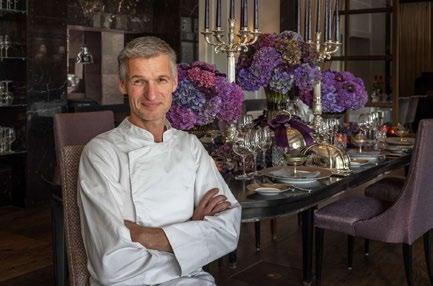

Renowned for generations as the most luxurious and historic hotel in Scandinavia, the award-winning d’Angleterre is the perfect setting for the most special of celebrations. Suitable for nearly every kind and scale of event, the professional team at d’Angleterre ensures that no detail goes overlooked. The historic Palm Court and the majestic Louis XVI Ballroom continue to be the most desired, iconic event venues in Copenhagen. Our beautiful Champagne bar Balthazar and the stunning CREATIONS Studio can also be transformed
into elegant event spaces for more intimate receptions of up to 100 guests. At each and every one of its venues, d'Angleterre offers guests the ultimate custom-designed event experience – whether it is a gala fairytale wedding, a tailor-made meeting, a product launch, a corporate event or an elegant reception. The dedicated and specialized events team at d’Angleterre assists in the full scope of planning and execution of weddings, celebrations and events to ensure a seamless experience that creates lasting memories for all.
Krug & d’Angleterre room service

Each year, the House of Krug pays tribute to a humble single ingredient and inviting Krug Ambassade Chefs around the world to explore the many pleasures it can reveal when paired with a glass of Krug Grande Cuvée. In 2022, the House of Krug celebrates the culinary chameleon we call rice.
This selection of food pairings is handpicked and developed by Head Chef Jakob de Neergaard as a beautiful homage to this year’s ingredient.
nordic business // 70
Sponsored content
Delicacies at d´Angleterre
MAISON d’Angleterre is a culinary destination for discerning connoisseurs. In the morning, MAISON d’Angleterre smells of freshly brewed coffee and warm house made croissants. And in the afternoon, our skilled confectioner serves a little piece of heaven – a beautifully designed cake to be enjoyed. MAISON now offers party and wedding cakes created with your input and our skilled confectioners' knowledge of taste and aesthetics. All MAISON cakes are created based on good craftsmanship and a great taste experience - with aesthetics in the forefront.
New Year’s Gala
In keeping with tradition, we are back with our magnificent New Year’s Gala, which as per usual will take place in the beautiful surroundings in the d´Angleterre historic Palm Court in the heart of Copenhagen. The kitchen will create a sumptuous New Year's menu, where every single component is carefully selected. The dinner will be accompanied by exquisite wines and champagne, which complement the menu and promotes its many flavour nuances in the best way. Entertainment and music will be provided by the d'Angleterre Show Orchestra, Erann DD and Dawn Joseph. Finally, flowers and decorations will be created by d'Angleterre CREATIONS.

CREATIONS studio
Known for its elegant design, decór and discreet sense of style CREATIONS is where you’ll find the most beautiful gifts for the season’s many celebrations. The d’Angleterre CREATIONS boutique affords guests, admirers and design aficionados the luxury of taking the best of d’Angleterre home with them –beautiful floral creations, signature flowerboxes, luxurious blankets, exclusive scented candles, grand coffee table books, selected pictures of furniture and much more.



nordic business // 71
Sponsored content
SOMMERRO
Oslo’s new luxury hotspot is a social hub for bespoke cultural and culinary experiences celebrating Nordic culture. Providing a home away from home for both travelers and locals, the iconic 231room Art Deco hotel is complete with 56 branded residences, seven restaurants and bars, meeting and event spaces with capacity for up to 150 people, a 100-seat gilded theater, a landmark wellness space with a fully-equipped gym, and the city’s first year-round rooftop pool, sauna, and terrace.

Nordic Cuisine with a Twist

Set to become one of Oslo’s most coveted culinary destinations, Sommerro features seven restaurants and bars, including the city’s only rooftop restaurant, and outposts from local favorites Barramon, a Spanish tapas and wine bar, and Plah, one of the city’s most popular restaurants showcasing elevated cuisine by Norway’s “Best Thai Chef” Terje Ommundsen, which will also offer an exclusive chef’s table experience.
Meetings & Events
Sommerro boasts an extensive collection of historical meeting and event rooms welcoming groups of 12 to 150 people, which are all available to rent and come equipped with top technology. These cleverly designed spaces have the flexibility to host everything from an intimate dinner or a brainstorm away from the office, to larger events such as weddings or creative workshops.

nordic business // 72
Luxury rooms and suites


From cozy loft spaces to lavish suites, the hotel’s 231 rooms and suites, including 56 residences, come in all shapes and sizes to suit everyone from families with children to groups of friends and solo business travelers. Featuring opulent art deco details and custom furnishings, each guestroom boasts fully stocked mini-bars, curated artwork, an insider’s guide to the neighborhood, plus exclusive access to the rooftop pool and terrace, gym, and wellness space.
Oslo
Rooftop terrace
A vibrant hotspot with some of the best views in Oslo, the rooftop terrace will host local and international DJs with a menu of sharing plates and handcrafted cocktails. The only rooftop pool in the city, the pool deck is a year-round retreat exclusively available to hotel guests.

nordic business // 73
SCANDIC SPEKTRUM
Scandic Spectrum is a lively new hotel in the capital of Denmark. The hotel is located in central Copenhagen and features 632 rooms, a spacious wellness area, two restaurants, a rooftop bar and large event spaces. Scandic Spectrum will also host a variety of social events for guests and Copenhageners alike.
Scandic Spectrum aims to offer a new type of hotel experience where guests can enjoy a good night’s sleep as well as a variety of exciting experiences. For this reason, shared spaces such as the wellness area and event spaces are also open to the public. Additionally, Scandic Spectrum will host a number of events, including social dining, concerts and quiz nights open to all.
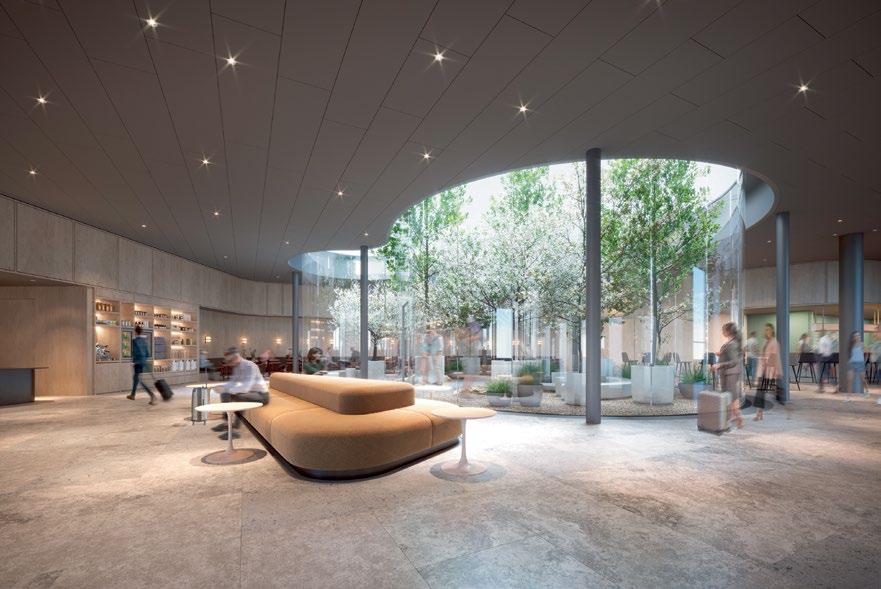
One of the two restaturants is Nordbo, which is located on the ground floor. The restaurant is inspired by a Nordic lifestyle and focuses on “hygge”, warmth and fire. Nordbo serves seafood, pizza and pasta made from predominately local ingredients as well as its own charcuterie.

nordic business // 74
The hotel also has nine conference rooms on the top floor, several of which have access to the rooftop terrace, and four event spaces that can accommodate more than 300 people.


copenhagen
Scandic Spectrum also offers a large wellness area inspired by the Nordic forests, fjords and mountains. Here, guests can enjoy the 25-meter pool, steam room, a Rasul thermal mud experience and a wide variety of spa treatments featuring natural and sustainable products.

nordic business // 75
The hotel is located in central Copenhagen and features 632 nicely furnished rooms.
AT SIX
The Magic Starts At Six
At Six is a 5-star hotel that embodies quality and the unexpected. The rooms of Hotel At Six all share essential features, living up to the discerning demands of a modern luxury hotel. The hotel offers 343 rooms in central Stockholm with everything from spacious Standard rooms to suites.
Finally, for the long-term stay the elegantly designed Residences are the perfect home away from home. 32 apartments with a variety of service levels to choose from, located in the buzzing heart of Stockholm’s business district.


Restaurants & Bars
The hotel offers one restaurant, one bistro, two bars, and a rooftop park. The Dining Room is one of Stockholm’s most praised restaurants. In the wine bar Blanche & Hierta you’ll find one of the most extensive wine lists in the city, and for cocktails, head to the sleek Cocktail Bar.
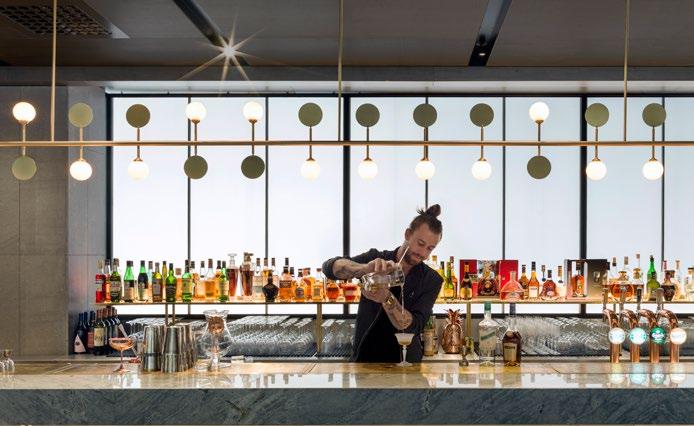
nordic business // 76
Rooms & Suites



The 343 rooms of Hotel At Six all share essential features, living up to the discerning demands of a modern luxury hotel. The Junior Suites and Suites have a dazzling city view through panoramic windows, but to experience the At Six vision to the fullest the presidential suite “The Masterpiece” is the right choice. Here, every detail is carefully curated to create a one-of-a-kind experience, styled with bespoke design pieces, contemporary art and exclusive materials.
stockholm
Gym & Wellness
The At Six gym comes with a cross-fit inspired equipment setup and features some of the most well-renowned international gym equipment brands. In addition to the high-end equipment and free weights, the At Six Gym has punching bags, up-hill running and water rowing. The wellness area of the gym is focused on fitness treatments and there’s also saunas for warm rehabilitation and recovery.
Meeting & Events
Social At Six is a high-end meeting and event space. With the Social At Six’s flexible event area of 2 800 sqm, it isn’t hard to find a space to host that special occasion. The event space also offer a 12*3m Led-screen for astounding presentations, a podcast studio and all the technology you will ever need. As they say — the best meetings start At Six.

nordic business // 77
MENS WEAR
 Photo by Tim Krauss / Unsplash
Photo by Tim Krauss / Unsplash
DOUBLE-FACE MONOGRAM COAT
This sophisticated coat gets a cool visual twist from its gusset pocket detail. Buy on louisvuitton.com Price EUR 2.595,-

Buy on boozt.com Price EUR 15,-
R.M. WILLIAMS
Leather boot with classic squared chisel toe from Australian RM Williams. The classic boots have elasticised gussets and pull tabs at the front and back that make them easy to put on.
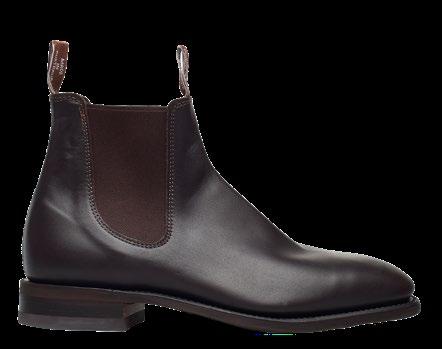
Buy on rmwilliams.com Price EUR 498,-
WOLL CAP
From Paul & Shark. Buy on troelstrup.com Price EUR 135,-


EXCLUSIVE BELT

H Take Off belt buckle & Reversible leather strap 32 mm. Buy on hermes.com Price EUR 753,-
OXFORD SHIRT
Oxford shirt with the brand’s iconic logo embroidered on the left chest from Ralph Lauren. Buy on troelstrup.com Price EUR 162,-

Custom Slim Fit Textured Polo Shirt. Buy on boozt.com Price EUR 189,-

nordic business // 79
POLO RALPH LAUREN
TOMMY HILFIGER
By Heidi Carlsen
WOMENS WEAR
 Photo by Ben Collins / Unsplash
Photo by Ben Collins / Unsplash
SLIM-FIT FORMAL COAT IN WOOL AND CASHMERE

A sleek coat with logo lining by BOSS Womenswear. Buy on hugoboss.com
Price EUR 534,-
 By Heidi Carlsen
By Heidi Carlsen
LONG-SLEEVED BLOUSE IN PINSTRIPE COTTON WITH FRILL DETAILS
A feminine blouse with long sleeves by BOSS Womenswear. Buy on hugoboss.com Price EUR 200,-

LOUIS VUITTON 90 X 90 cm. Price EUR 440,-
SEE BY CHLOÉ
See By Chloé’s ‘Tilda’ tote is made from supple leather and has whipstitching along the suede paneled sides. Buy on net-a-porter.com Price EUR 480,-

PLAID WOOL-BLEND TWEED WIDE-LEG TROUSER
These plaid tweed trou sers merge a wide-leg silhouette with a luxe blend of wool tweed, tus sah silk and lightweight linen from Italy. Buy on ralphlauren.eu Price EUR 400,-

nordic business // 81
Ralph Lauren
Player towel in 100% cotton from Ralph Lauren. Colour: White. Buy at www.illumsbolighus.dk. Prices from EUR 13,-

Striped bathrobe from Aiayu

The ultrasoft and cosy bathrobe is produced in 100% ecological cotton. Use it in the Cold mornings or after a refreshing swim by the sea. Buy at www.jacobsenplus.dk.
Prices from EUR 195,-
 By Heidi Carlsen
By Heidi Carlsen
ZEN IN THE BEDROOM
By Lassen – ML42
The elegant design is inspired by the cobbler's chairs of the past and By Lassen has transferred the light and elegant look to a sculptural stool. Buy at www.paustian.com

Prices from EUR 815,-
Striped bedlinen – double size (200 x 220 + 2 pillow cases) Classic bedlinen with a discreet AIAYU logo and zipper. The set includes 2 pillow cases. Buy at www.aiayu.com.
Prices from EUR 415,-

nordic business // 82
HIGH QUALITY LEGAL SERVICES
Magnusson is a one-stop-shop law firm focused on delivering top quality legal services for the Nordics and the Baltics.


We don’t miss any details, not even the smallest ones. magnussonlaw.com


























































nordic business //

















 Photo:TheQueen ElisabethPrize forEngineering Foundation
Photo:TheQueen ElisabethPrize forEngineering Foundation















 By Henrik Malmgreen
By Henrik Malmgreen




 ByMalinSjögren
ByMalinSjögren










 By Bibi Christensen
By Bibi Christensen





















































































 Photo by Tim Krauss / Unsplash
Photo by Tim Krauss / Unsplash







 Photo by Ben Collins / Unsplash
Photo by Ben Collins / Unsplash

 By Heidi Carlsen
By Heidi Carlsen





 By Heidi Carlsen
By Heidi Carlsen




























































